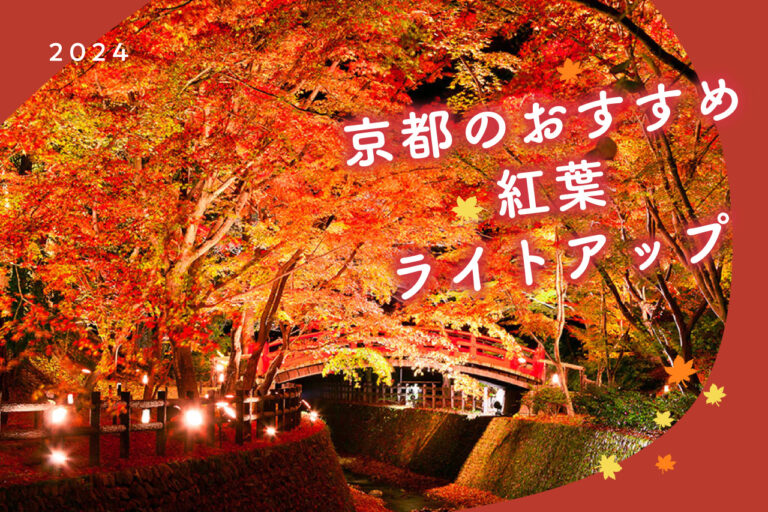
2024] Recommended Light-up of Autumn Foliage in Kyoto
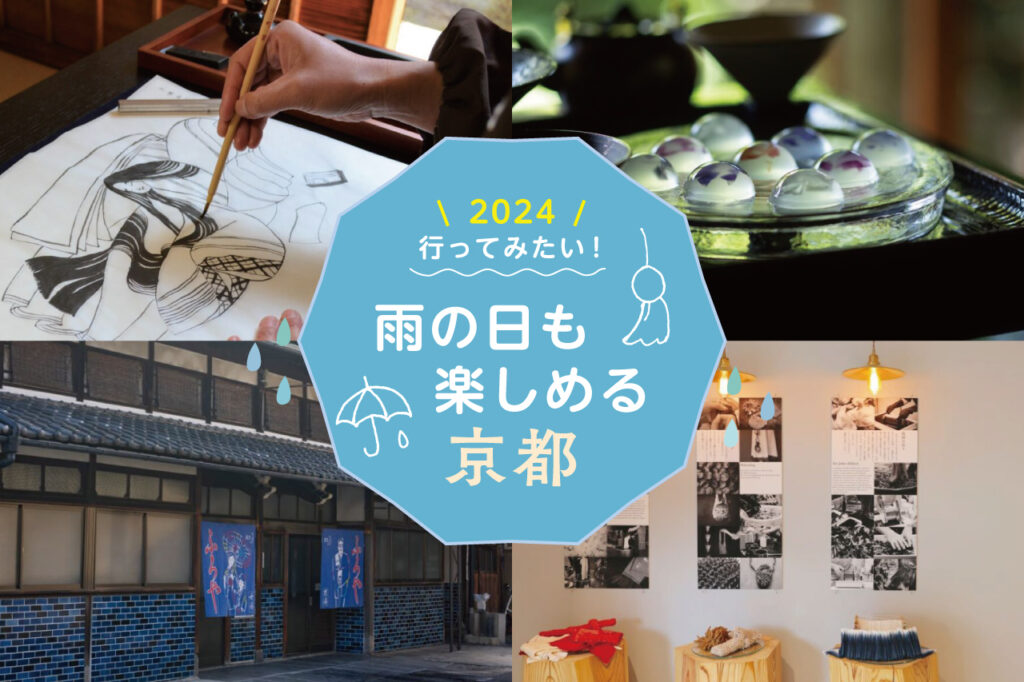

Are you disappointed that you can't enjoy your trip to Kyoto when it rains? You don't have to give up your Kyoto experience!
In this issue, our local editorial staff recommends Kyoto sightseeing spots that can be enjoyed even on rainy days. From temple experiences to beautiful scenery that is even more beautiful on rainy days, we hope you will discover something new about Kyoto.
[Located just a few steps from Yasaka Shrine, the Yoshimoto Gion Kagetsu Theater is the place in Kyoto where you can enjoy the laughter of Yoshimoto. At this theater, many comedians, from young comedians to veterans, perform manzai, rakugo, and shinkigeki. Shinki gekijou, which are familiar to audiences on TV, are even more entertaining when seen live. The audience is sure to be filled with laughter and feel refreshed! Check the official website for the performance schedule.
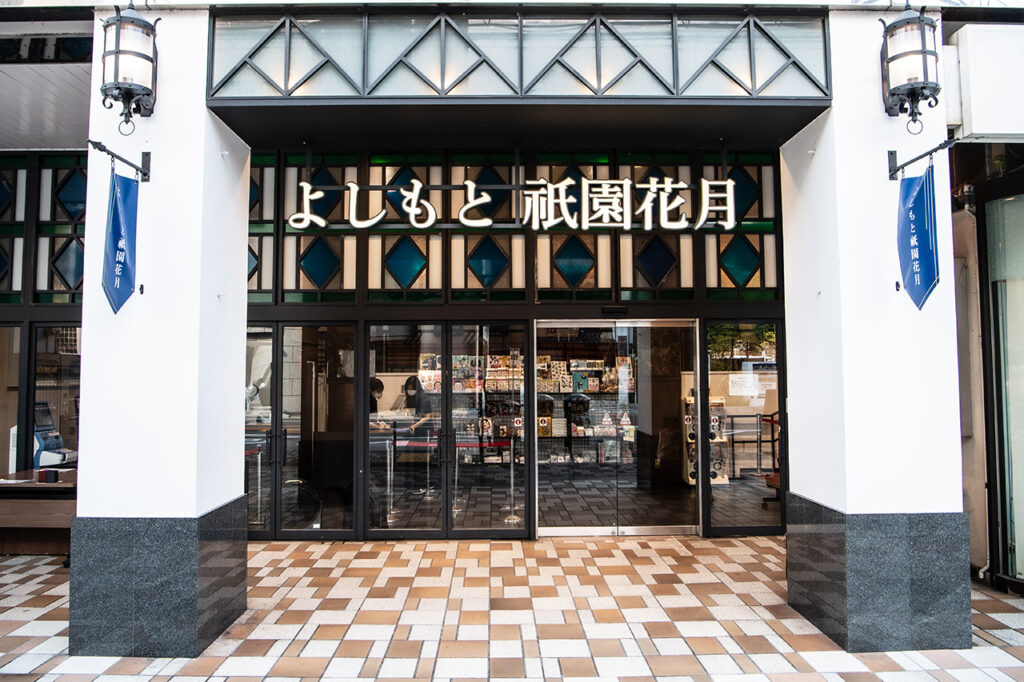

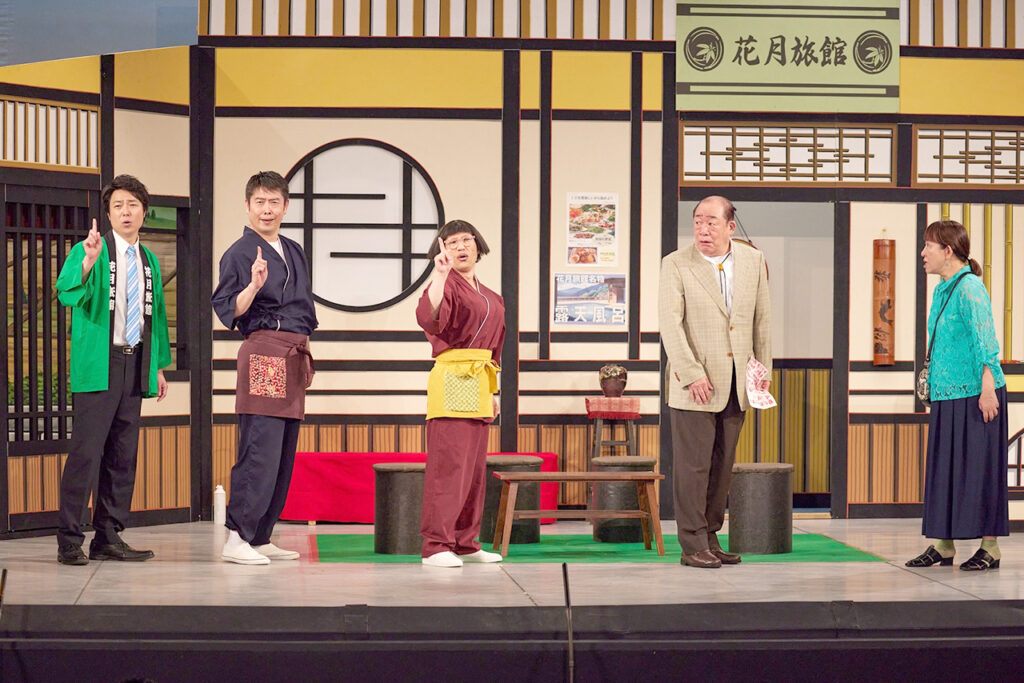
*Photo is an image

Performance Schedule
Schedule/Web siteConfirmation required from
Applications: Web site, telephone (075-532-1500), convenience stores or at the theater counter
A store specializing in Kyoto fans is located near Miyagawa-cho. Here, visitors can try their hand at the traditional Japanese tatami room game of Utsugi-kyo, which originated in the Edo period (1603-1868). The game is played by fluttering a fan at a target and competing for points based on the shape of the fan that falls. A maiko can also be invited to participate in the Tousenkyo experience (additional 22,000 yen or more, reservation required). There is also a fan painting experience, where you can draw your favorite picture on fan paper, and a professional craftsman will make it into a fan and deliver your original fan in about one month.
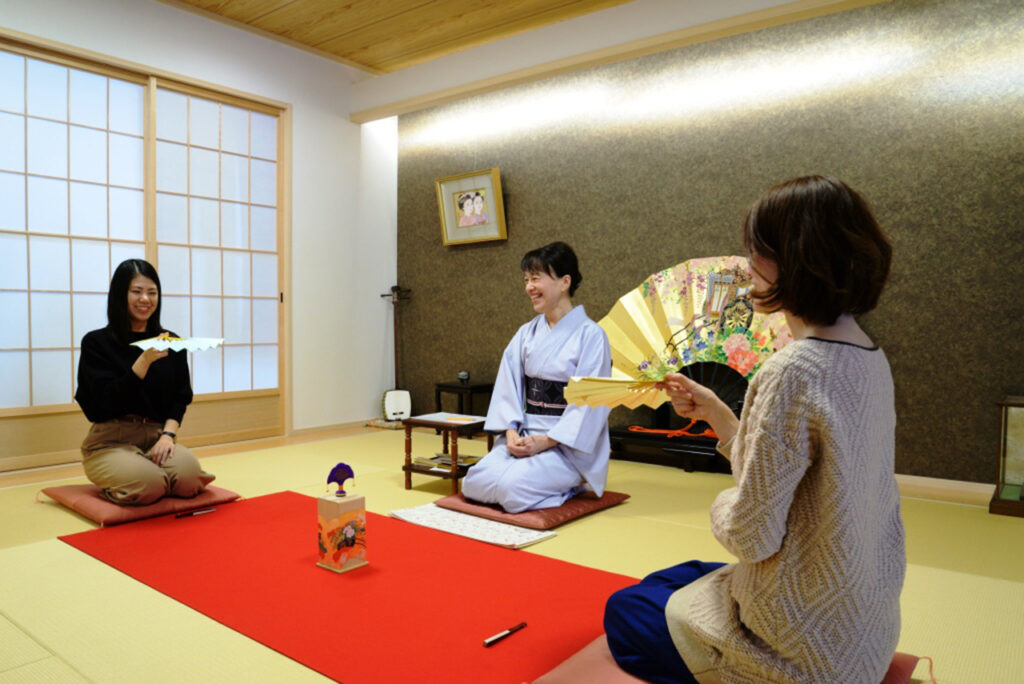

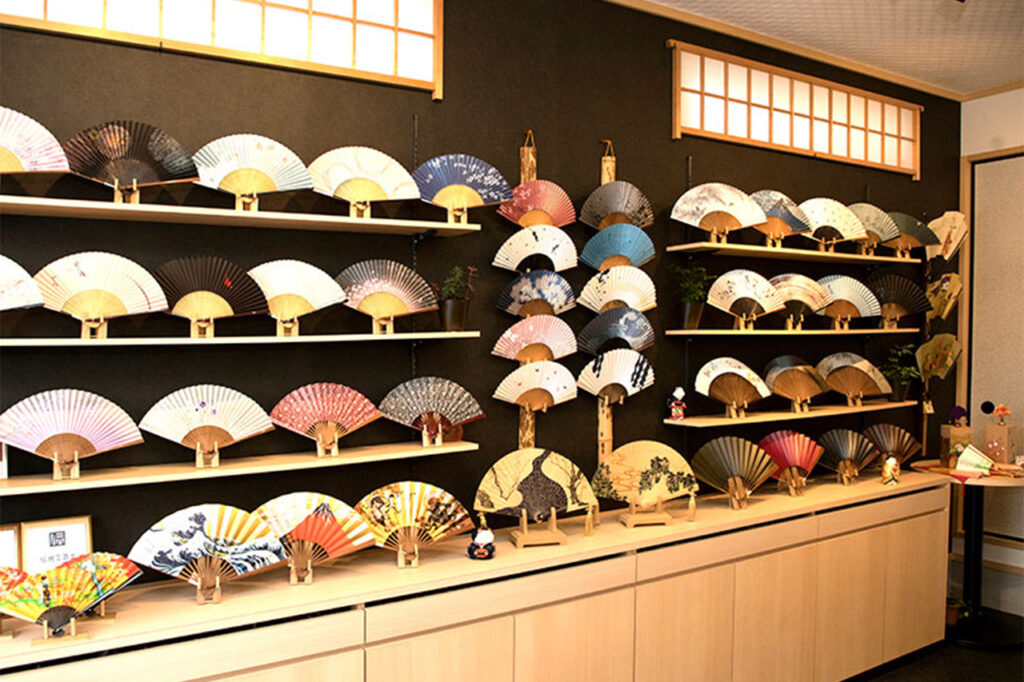

Tousenkyo Experience
Reception date/time/10:30-17:30, Saturday 13:00-17:00
Time required/approx. 60 min.
Fee / 2,200 yen per person (including tea and snacks), reservations required (reservations can be made for 2-6 people)
Fan Painting Experience
Reception date/time/Mon, Wed, Fri, Sat 13:00~15:00
Time required/approx. 90 min.
Price / From 2,500 yen per person, by reservation only (reservations can be made for 2-6 persons)
The Gekkeikan Okura Memorial Hall in Fushimi will be newly renovated and reopened in February 2024. The facility has been renovated to make it even more comfortable, with a brand store featuring a wide selection of products and an entrance with a waiting room. At the tasting corner, which was also renovated, about 10 types of sake, carefully selected according to season, are on standby. Visitors can choose three of their favorite types and enjoy tasting them using a coin-operated server. Come and immerse yourself in the world of sake at the newly renovated Gekkeikan Okura Memorial Hall.
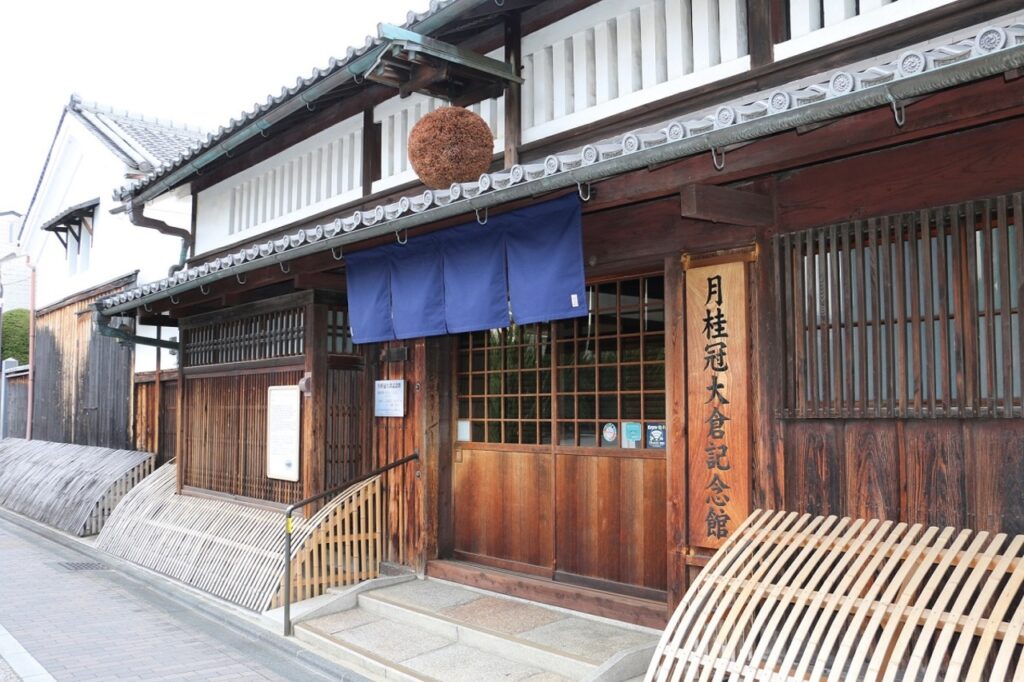

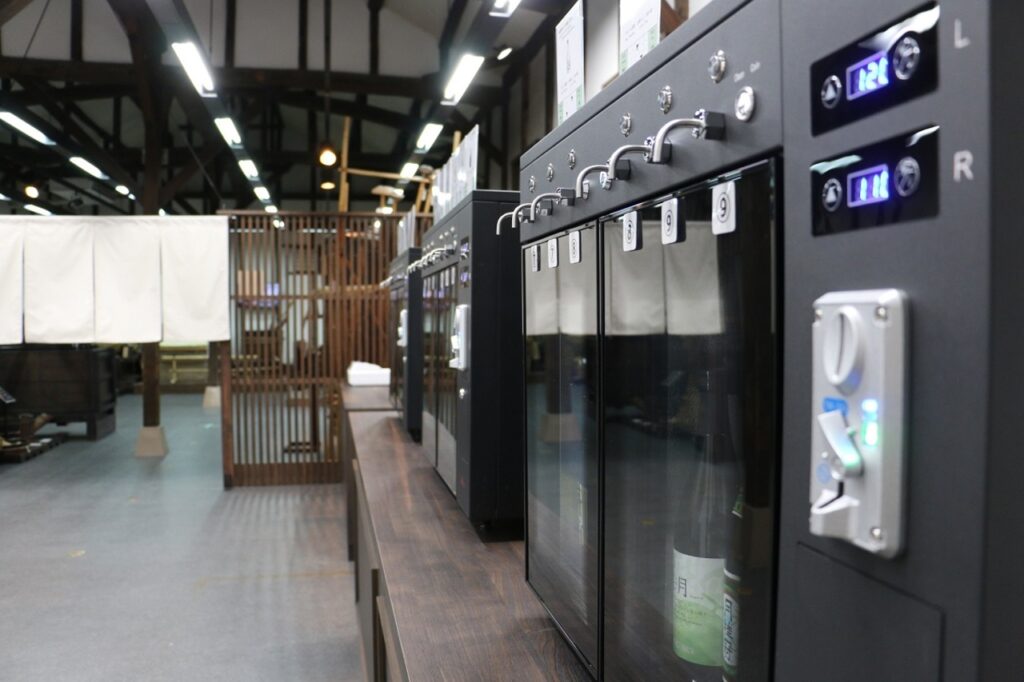

Hours of operation/9:30-16:30 (reception 16:00)
Closed: Bon Festival (August 13-16), year-end and New Year holidays (December 28-January 4), and other temporary closures
Time required: approx. 40-60 min.
Admission / 600 yen for 20 years old and older (with 3 kinds of sake), 100 yen for 13-19 years old (with souvenir)
Fukujuen is a long-established Uji tea shop founded in 1790. At Kyo-no-chagura, located on the basement floor of the main store in Kyoto, you can learn how to brew tea from a Japanese tea instructor, or try your hand at blending a cup of tea to find your favorite tea. Even the tea you normally drink without thinking about it can become much more delicious depending on how it is brewed! There are many other tea-related learning opportunities available, such as a Japanese tea drinking comparison experience and an easy matcha tea class, so be sure to participate in the experience that interests you.
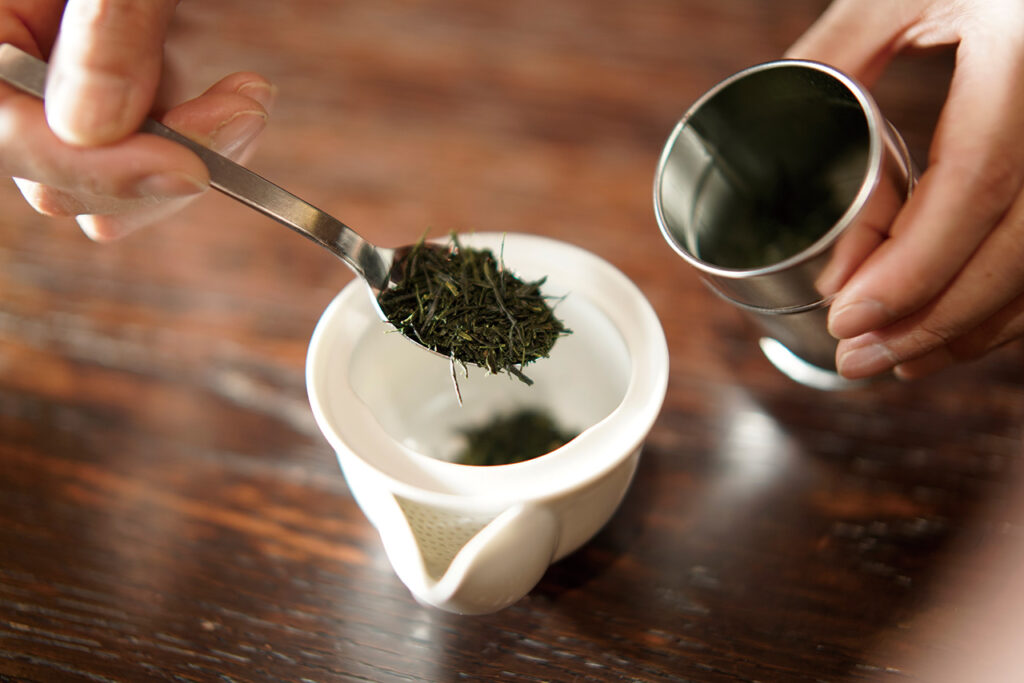

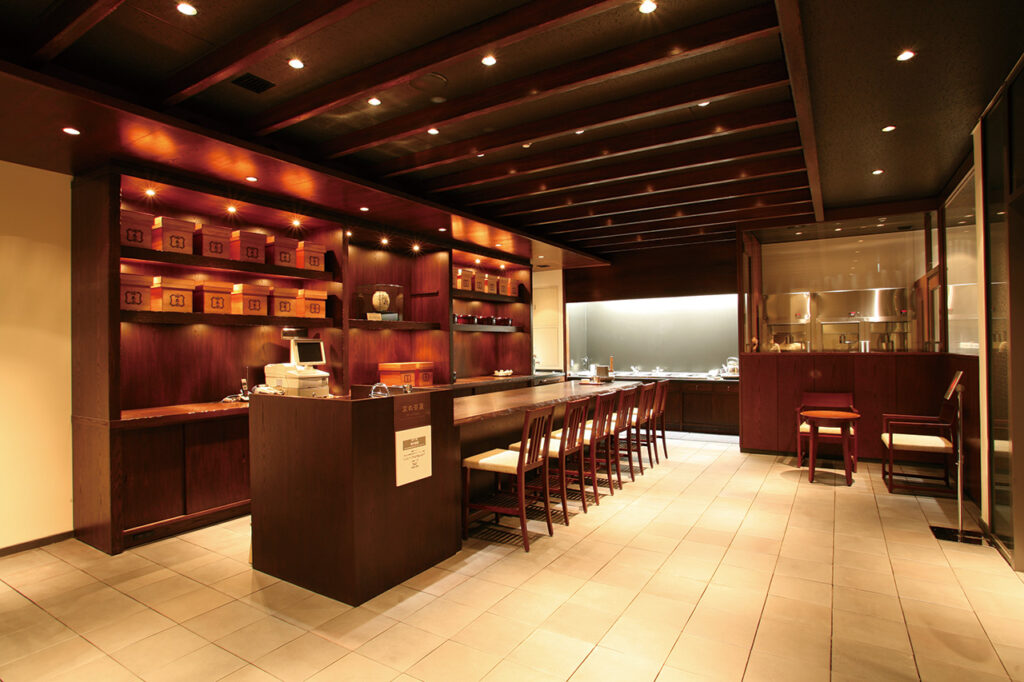

Lecture on how to brew a delicious cup of tea
Hours of operation / 11:00-18:00
Time required/60 min.
Fee/3300 yen
Making original blended tea (semi-custom order, 60g tea in a can)
Hours of operation / 11:00-18:00
Time required/90 min.
Price/person: 5,500 yen per person (reservations can be made for 1-6 persons; consultation required for more than 6 persons)
Reservations required by phone or online.
Tofuku-ji Temple, the head temple of the Tofuku-ji School of the Rinzai Sect of Zen Buddhism, is also known for its beautiful scenery during the rainy season. From the Tsutenkyo Bridge over the ravine on the temple grounds, visitors can see the fresh green of green maples from May to June, and in summer, approximately 2,000 Iroha maples and maple trees can be enjoyed. The sight of the valley turning green is breathtaking. It is also wonderful to sit on the porch of the hojo and take a good look at the honbo garden, which has four gardens on the north, south, east, west, and south sides, created by the gardener Mirei Shigemori. There are several other areas to visit, so be sure to allow plenty of time for your visit.
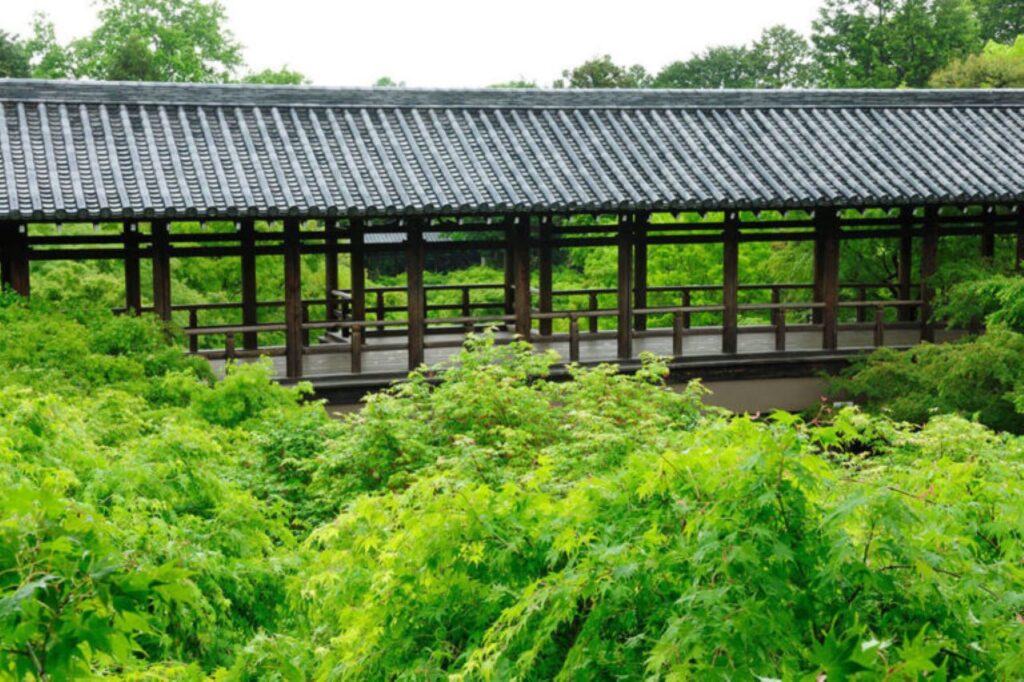

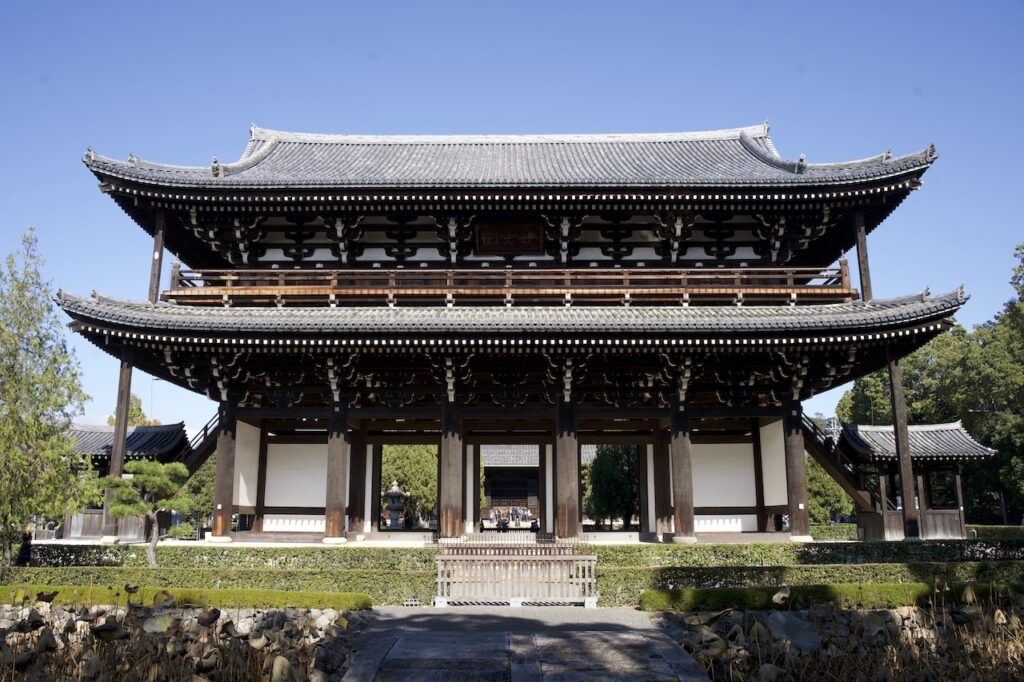

Visiting hours/9:00-16:00
Admission fee: Tsutenkyo/Kaisando Adults 600 yen, elementary and junior high school students 300 yen
Tofukuji Honbo Garden (Hojo) Adults 500 yen, elementary and junior high school students 300 yen
Common admission ticket: 1000 yen for adults, 500 yen for elementary and junior high school students (except for autumn)
* Visiting hours and admission fees for Tsutenkyo and Kaisando vary depending on the season.
[Ryosokuin Temple is the pagoda temple of Kenninji Temple (a temple within the precincts of the main temple). The zazen experience at this quiet temple, which is conveniently located near Gion and Kawaramachi, is gaining a good reputation. In the clear morning air, you can learn the essence of zazen, including how to "loosen" by sitting, how to "relax" by relaxing, and how to "let go" by surrendering your awareness to your breath. Through the experience of zazen, you can free yourself from your busy daily life.
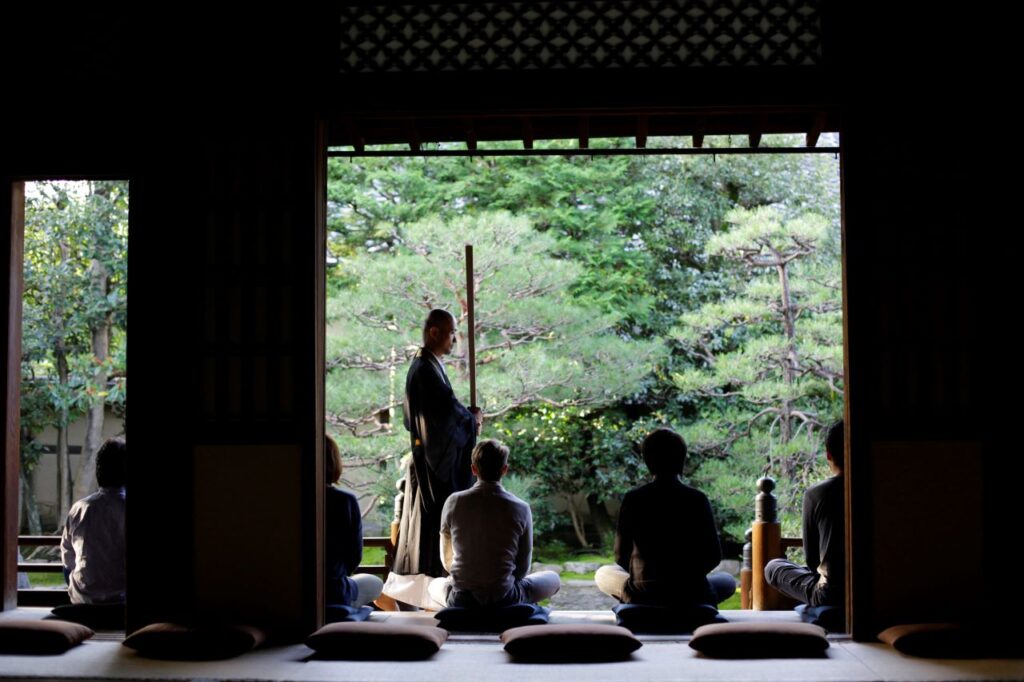

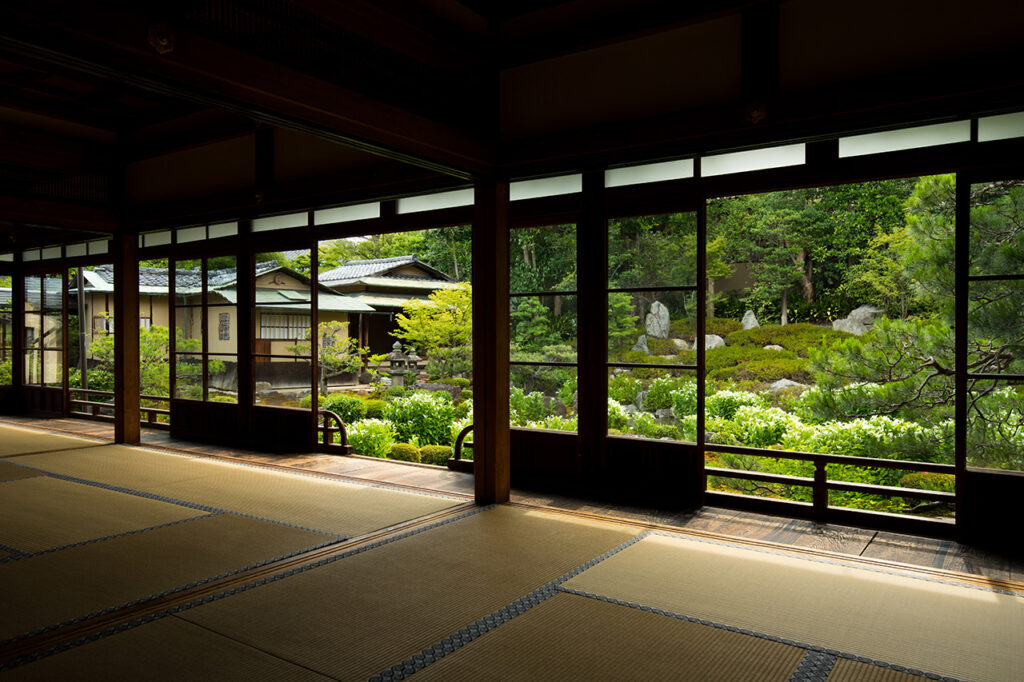

Zazen Experience
Schedule/The hospital'sWEBConfirmation required at
Duration: 60 minutes (explanation of zazen, zazen, Dharma talk)
Fee: 2,000 yen (including visit to the Gohonzon, tour of the garden, and free meditation) *Photographing of the garden is permitted.
Application method: WEB or by phone (Applications accepted up to 1 hour before the start time)
Other/Insect repellent, sweat towels, and water are recommended during the summer season.
Special opening of the garden in Hanxatsusei
Period / Saturday, June 1, 2024 - Sunday, July 14, 2024
Hours: 12:00 - 16:00 (gate closes at 16:30)
Entrance fee: Adults: 1000 yen (includes visit to the main hall and Shoin)
Groups of 20 or more/ Adults 900 yen, Junior high and high school students 500 yen
If you wish to walk around the garden, you need to apply for limited number of visitors.
Myokenji Temple was the first temple of Nichiren Shoshu in Rakuchu and was Hideyoshi's permanent residence. During the sutra copying experience, participants copy a passage from the Lotus Sutra, which is considered to be one of the finest teachings of Buddha Shakyamuni. Visitors can spend a quiet time facing themselves, whether for mental stability, prayer, memorial service, or improvement of their writing skills. After copying the sutra, visit the main hall, which is one of the largest in Kyoto, and the four different gardens, including the Shikai Shodou Garden, to experience the beauty of the changing seasons. *The three gardens of Korin, Hoitsu, and Chikurin are closed to visitors until January 31, 2025 due to renovation work on the shoin.
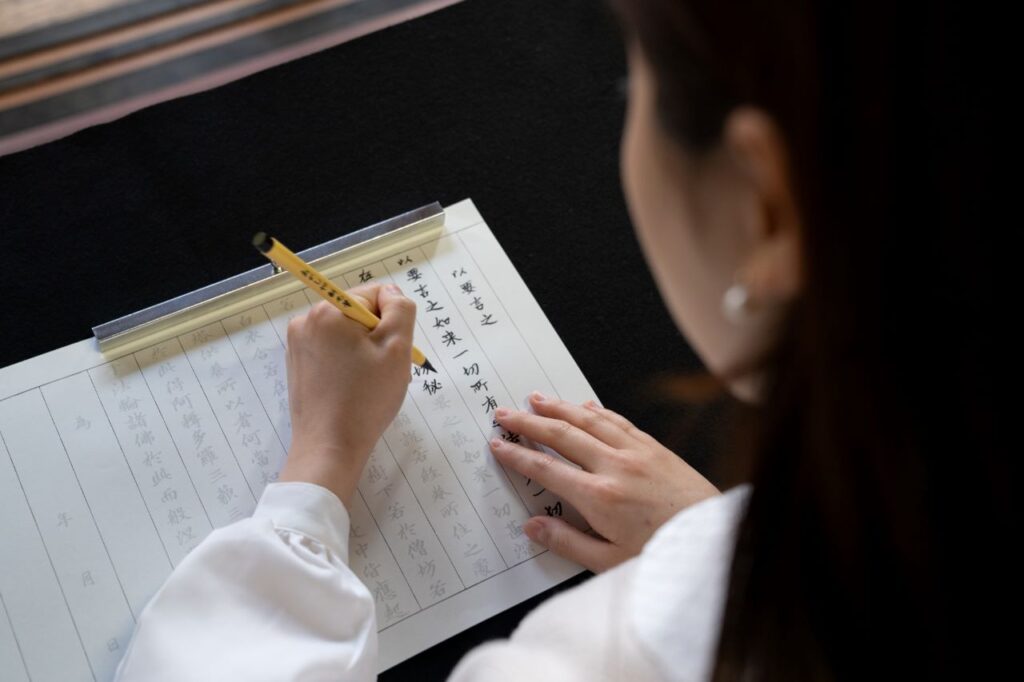

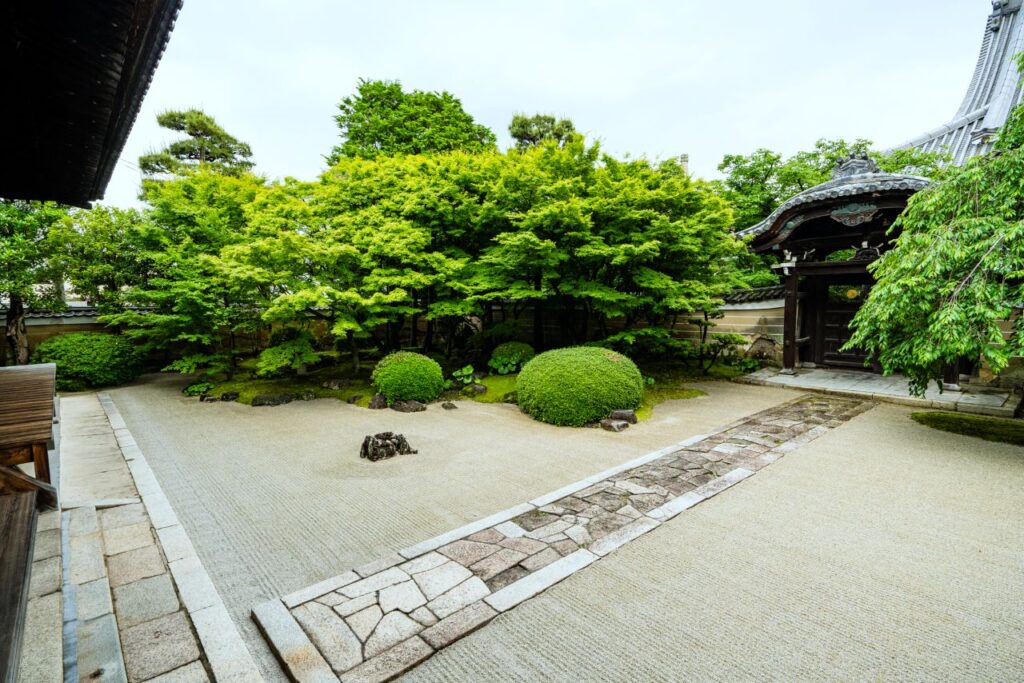

Shakyo Experience
Time/10:00~16:30(during the time of worship) ※Please allow plenty of time for your participation.
Time required / approx. 45 min.
Dedication fee / 1,500 yen (including worship fee)
How to apply / Applications accepted at any time (no reservation required)
Zuishin-in Temple is a temple associated with Ono no Komachi and known for its ume plum blossoms. The Zuishin-in Temple is known as a temple associated with Ono no Komachi and a popular spot for viewing ume plum blossoms. As you draw the portrait, you will become unmoved, and you will feel your body and mind naturally refreshed. The temple also features a moss garden and fusuma-e (sliding door paintings) by a contemporary artist who is attracting attention as a photo spot.
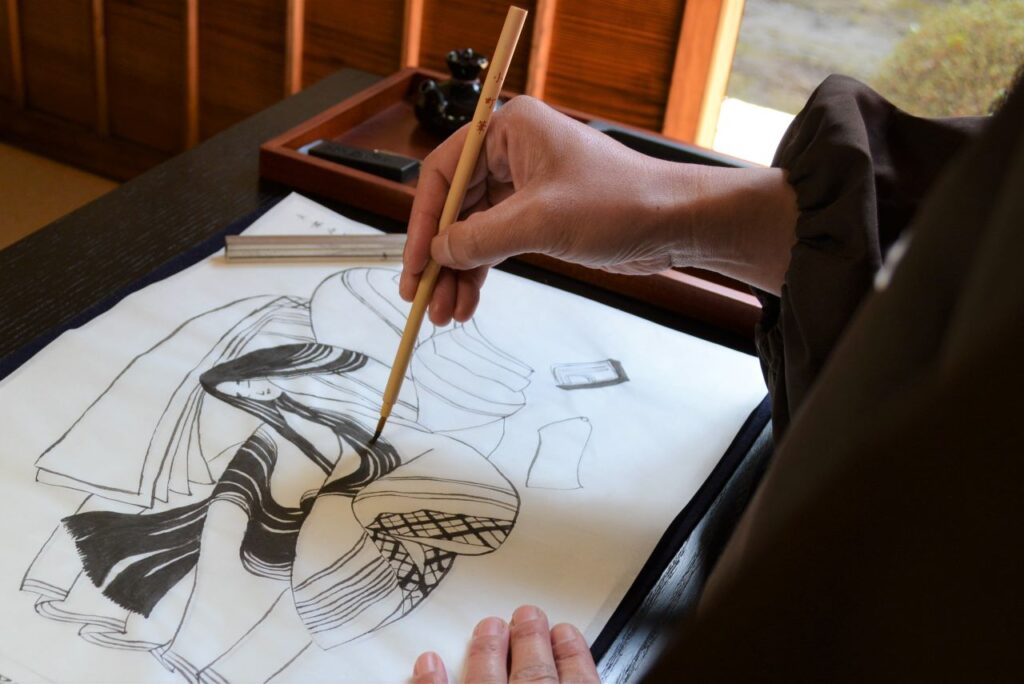

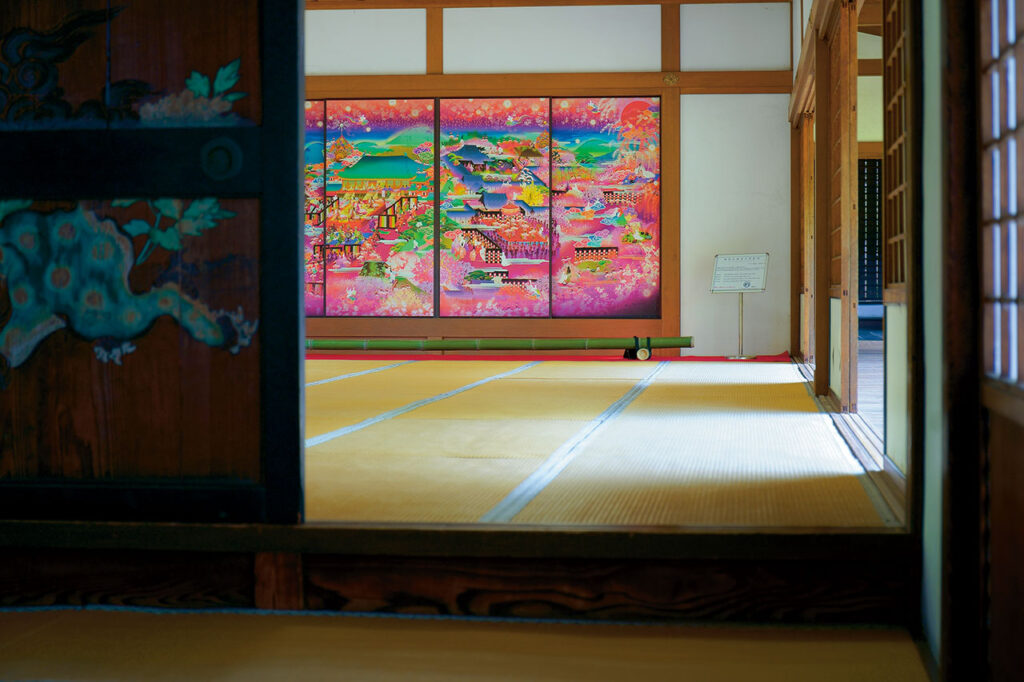

Experience Shakyo and Shabutsu copying
Reception hours/9:00-14:00
Time required: 1.5 to 3 hours (depending on the type of Buddha you choose)
Dedication fee / 2,000 yen (including entrance fee)
How to apply: Call (same-day applications accepted) *There are cases when the experience is not available due to Buddhist memorial services or events.
My Sake World Miike Villa is a hands-on facility where you can make your own sake in the form of a blend. A total of 12 brands of sake from Kyoto and other parts of Japan are available, including daiginjo, nama-shu, junmai-shu, aged sake, and many other types. Visitors can choose several types and blend them while listening to the staff's explanations and tasting them. In this completely private space, which was renovated from an old private house and is limited to four people, you can learn about the history and culture of sake while discovering your own unique way to enjoy sake.
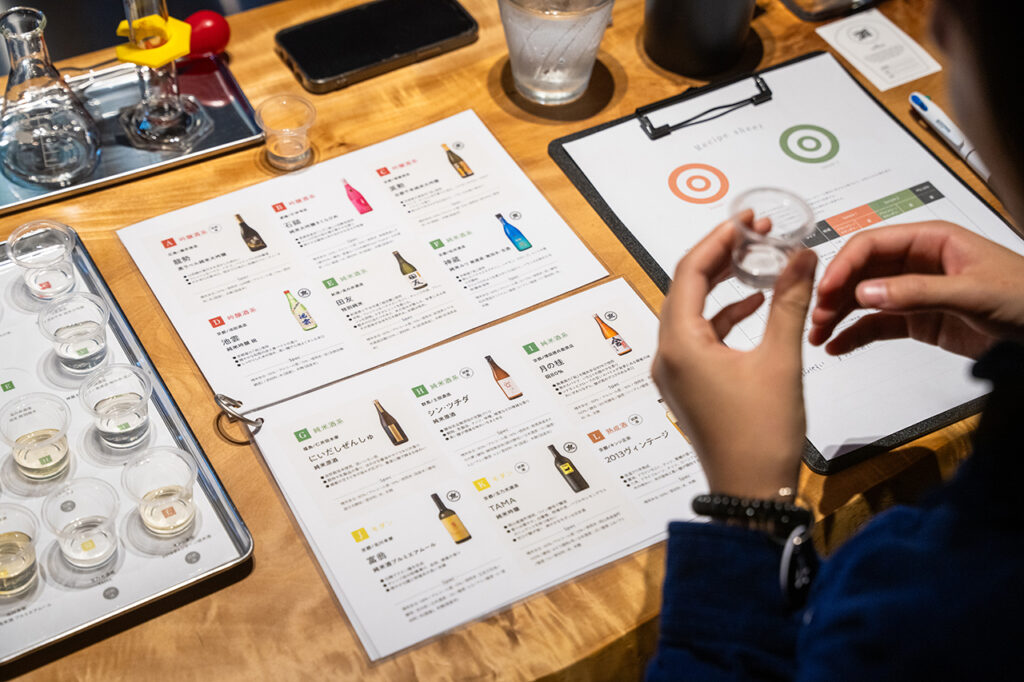

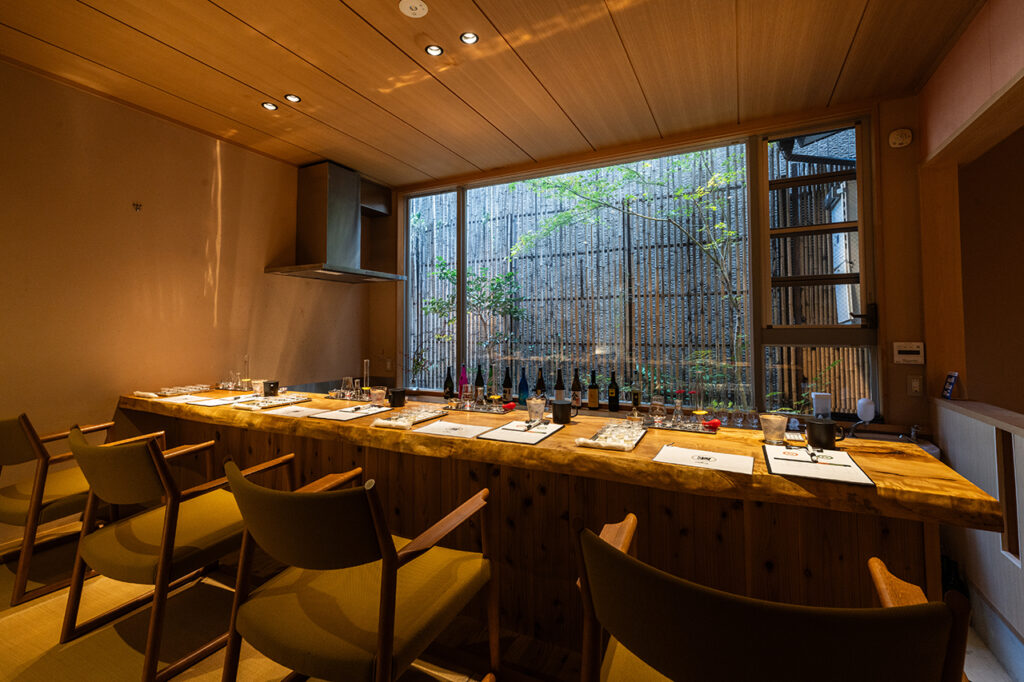

Original Blended Sake Experience
Trial hours / 3 sessions: 11:00-12:30, 13:30-15:00, 16:00-17:30
Time required / approx. 1.5 hours
Fee/5,900 yen (guided tour in Japanese)*7,500 yen for guided tour in English
*Reservations are given priority (reservations arehere)
Nijo Castle was built by Ieyasu Tokugawa. The Ninomaru Palace, a national treasure, contains approximately 3,600 paintings by the Kano school. The 1016 paintings, including the one depicting a pine tree and hawk, are designated as national important cultural properties, and the luxurious and gorgeous space is overwhelming. It is also famous in history that the 15th Tokugawa Shogun, Yoshinobu Tokugawa, expressed his intention to return to the shogunate in the palace. The building has witnessed the rise and fall of the Tokugawa family and the changes in history. In 1994, it was registered as a World Heritage Site by UNESCO, and is now crowded with tourists as a place that conveys Japanese history and culture to the present day.
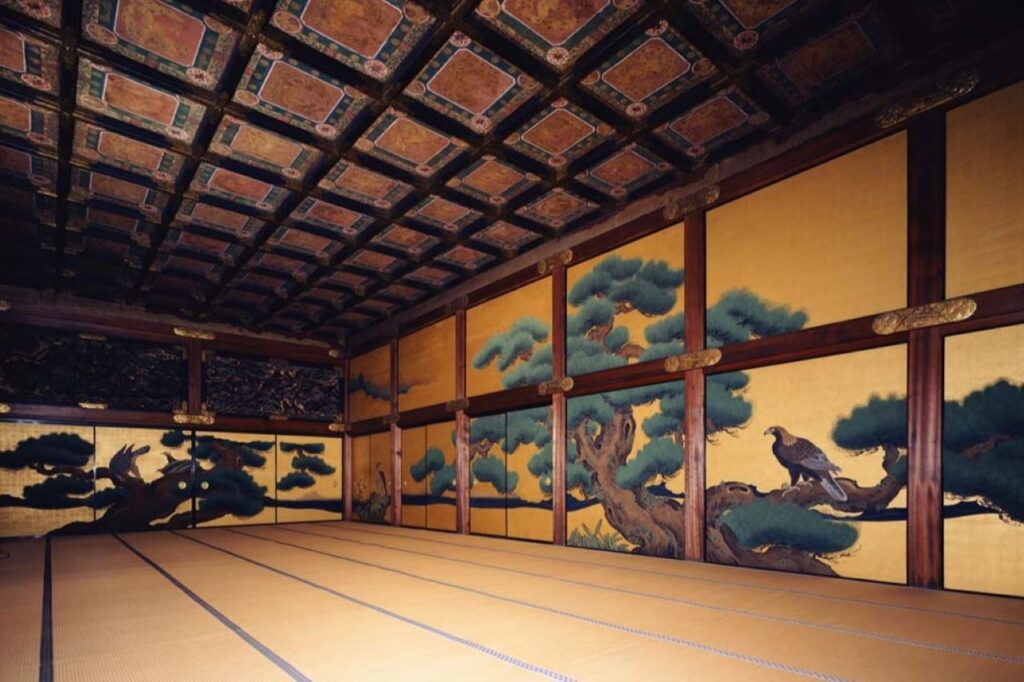

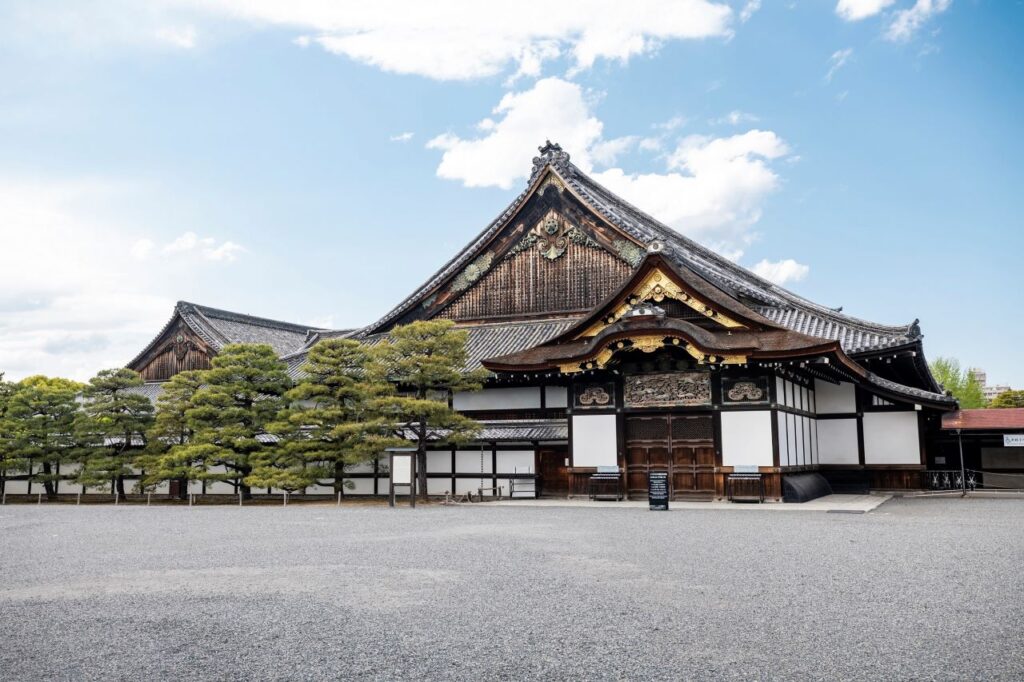

Entrance time/8:45-16:00 (Castle closing/17:00)
Ninomaru Palace・Viewing hours/8:45~16:10
The Honmaru Palace is currently closed to the public, but will be open to the public from September 2024.
The castle is closed/December 29-31
(If the day is a holiday, the Ninomaru Palace may be viewed on the following day. However, it will be closed on the following day.)
Castle entrance fee (includes Ninomaru Palace viewing fee): Adults ¥1,300, junior and senior high school students ¥400, elementary school students ¥300
The Kyoto Kyocera Museum of Art, one of the Okazaki area's representative cultural facilities, will be renovated in 2020, preserving and inheriting the design of the historic main building, while opening a new wing for contemporary art, a café, and a museum store. The dynamic spiral staircase in the central hall of the main building and other photo spots are scattered throughout the museum, making visitors want to take pictures. While touring the various exhibitions, visitors can enjoy the beauty of the space, which combines Japanese, Western, and traditional elements with modern design.
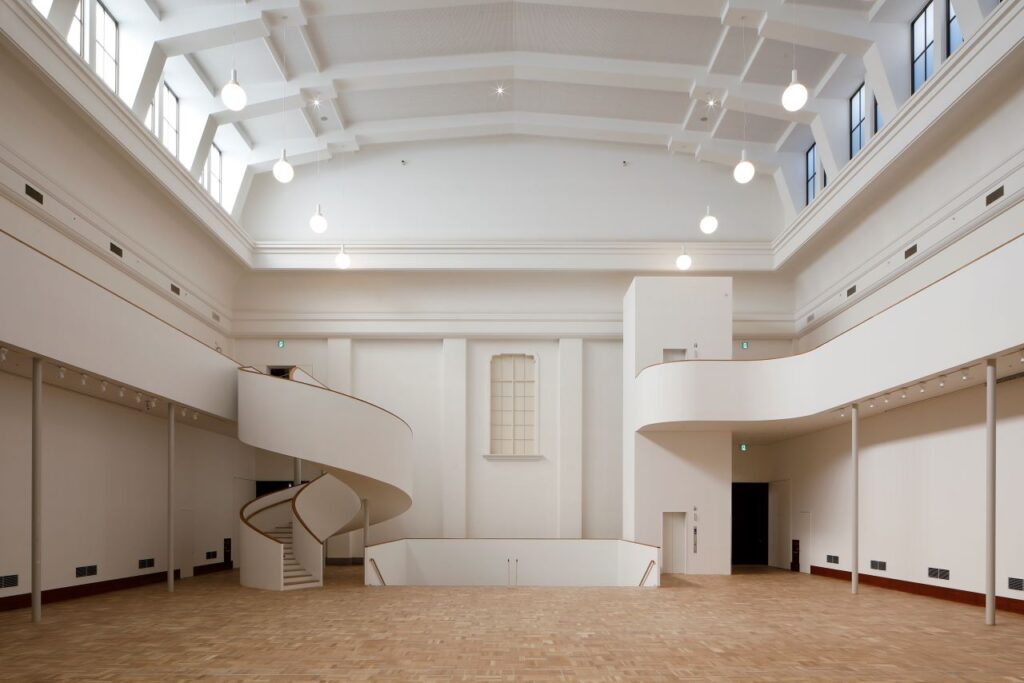

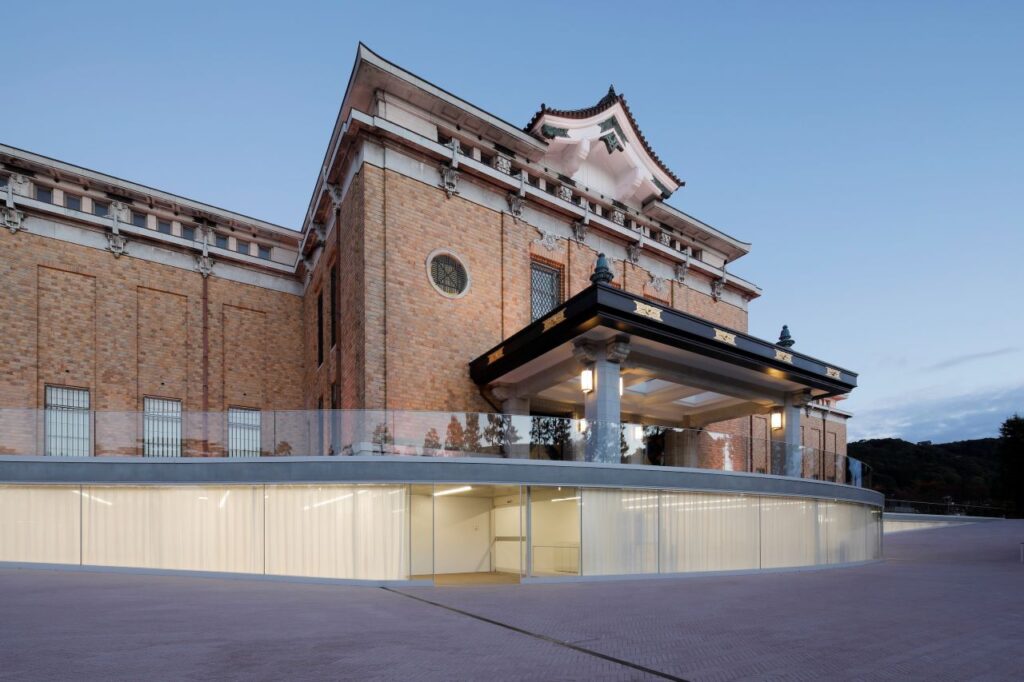
Photo by Takeru Kurita

Hours/10:00-18:00 (Admission to the exhibition rooms is until 17:30)
Closed/Mondays (open if Monday is a national holiday), year-end and New Year holidays (December 28-January 2)
Admission/Vary according to the exhibition.
The Kyoto International Manga Museum is both a museum and a library of manga. The museum has a collection of about 300,000 manga materials, ranging from caricatures and ukiyoe of the Edo period to current popular works and foreign ones, most of which can be read as much as one likes. The "Wall of Manga," a collection of approximately 50,000 manga books published since the 1970s, fills the entire wall of the museum. The museum also focuses on events and special exhibitions, allowing visitors to experience the appeal of manga from a variety of angles.
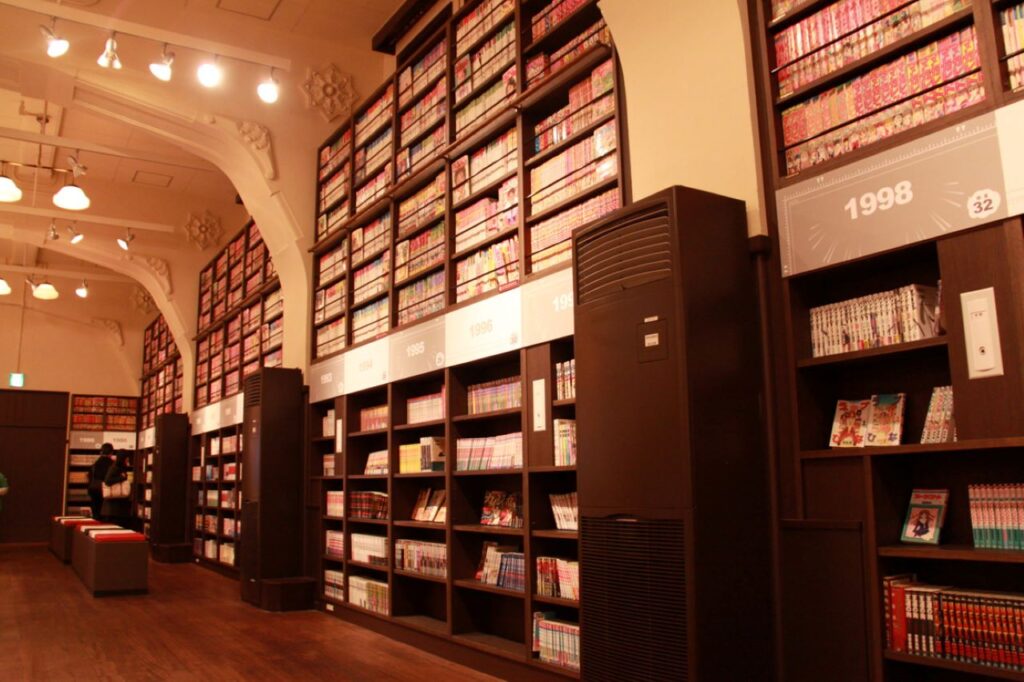

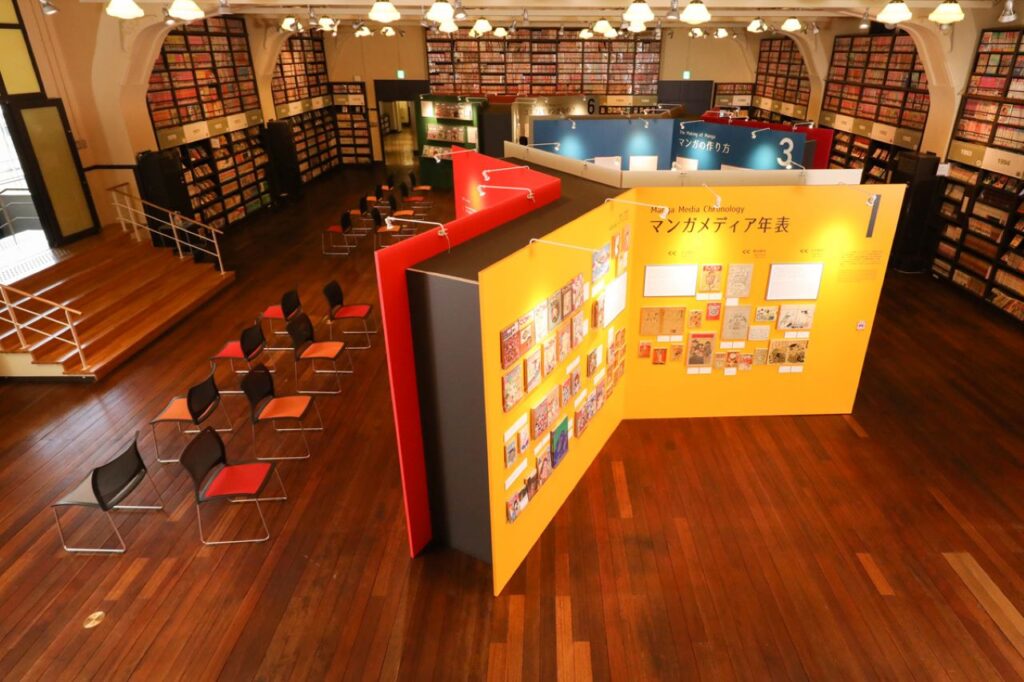

Hours/10:30-17:30 (last admission/17:00) *Open from July 1, 2024: 10:00-17:00 (last admission/16:30)
Closed: Wednesdays (closed the following day if the day falls on a holiday), year-end and New Year holidays, and other maintenance periods
Admission/ Adults 900 yen, Junior and senior high school students 400 yen, Elementary school students 200 yen *Adults 1200 yen after July 1, 2024
The Kyoto Aquarium is a large-scale inland aquarium located in Umekoji Park, near Kyoto Station. The "Jellyfish Wonder," which opened in 2020, exhibits 5,000 jellyfish of about 30 species in various tanks that match their ecology. The 360-degree panoramic tank is particularly interesting. In particular, the 360-degree panoramic tank GURURI has become a hot topic of conversation as visitors can experience the world of the sea in which jellyfish float.
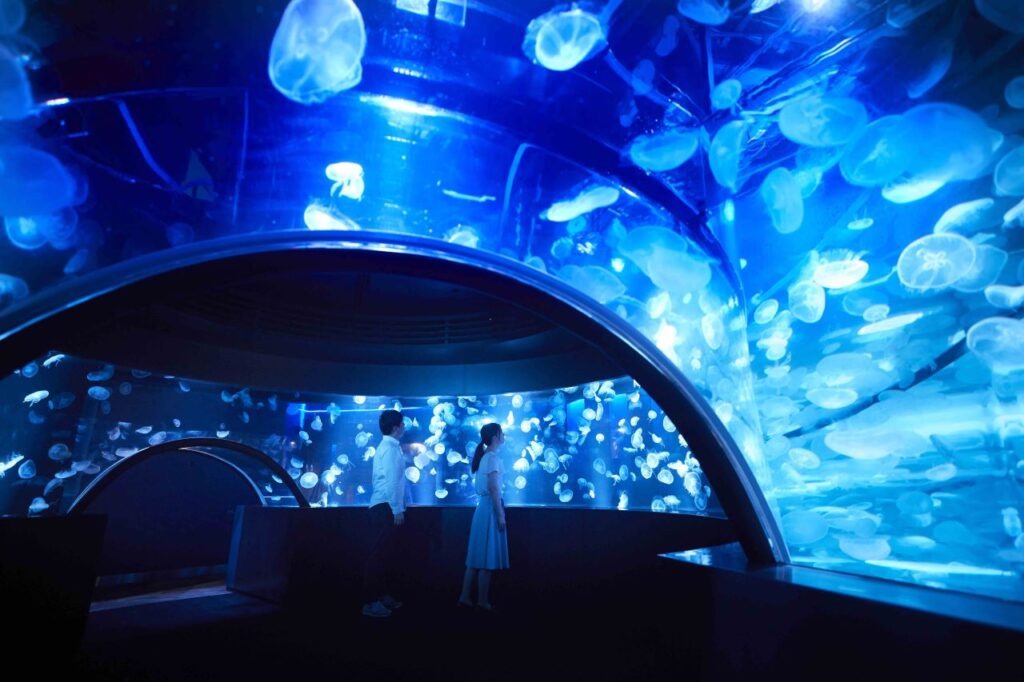

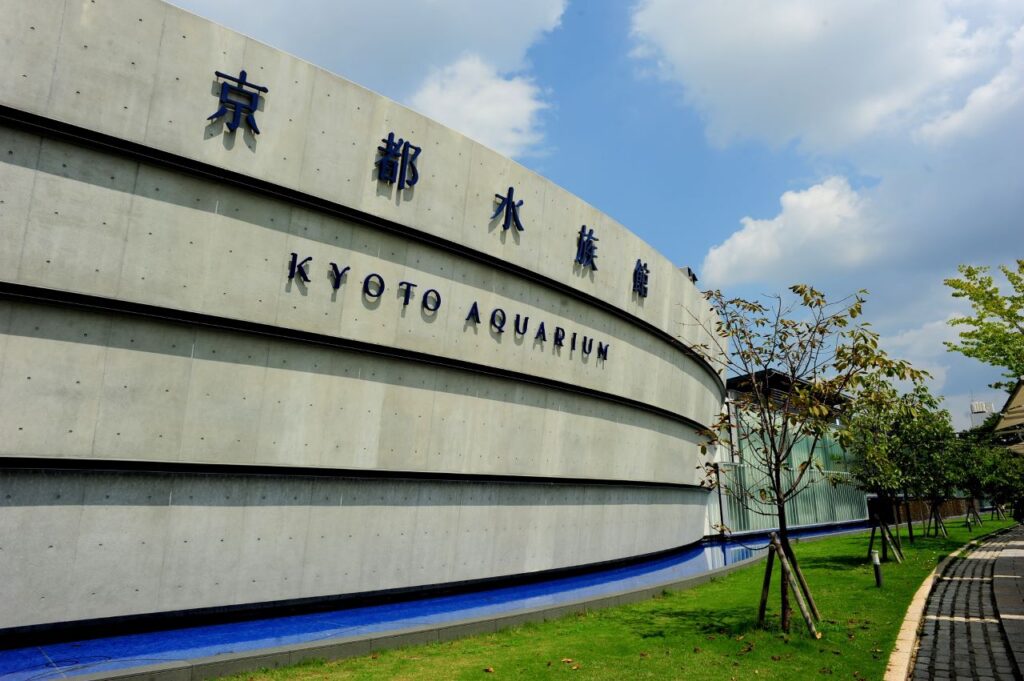

Opening hours/10:00-18:00 *Varies according to season. Reception closes 1 hour before closing.
Closed/Open all year round *Special holidays may apply.
Admission: Adults (including university students): 2,400 yen, High school students: 1,800 yen, Junior high school and elementary school students: 1,200 yen, Infants (3 years and older): 800 yen
The cafe [Moan], where you can enjoy tea and sweets in a building built in the Taisho era (1912-1926) as a tea house, offers a relaxing view of nature from the large windows on the second floor. The scene of rain dripping on the trees is like a scene from a movie. The sound of the rain makes this a cafe you will want to visit on a rainy day.
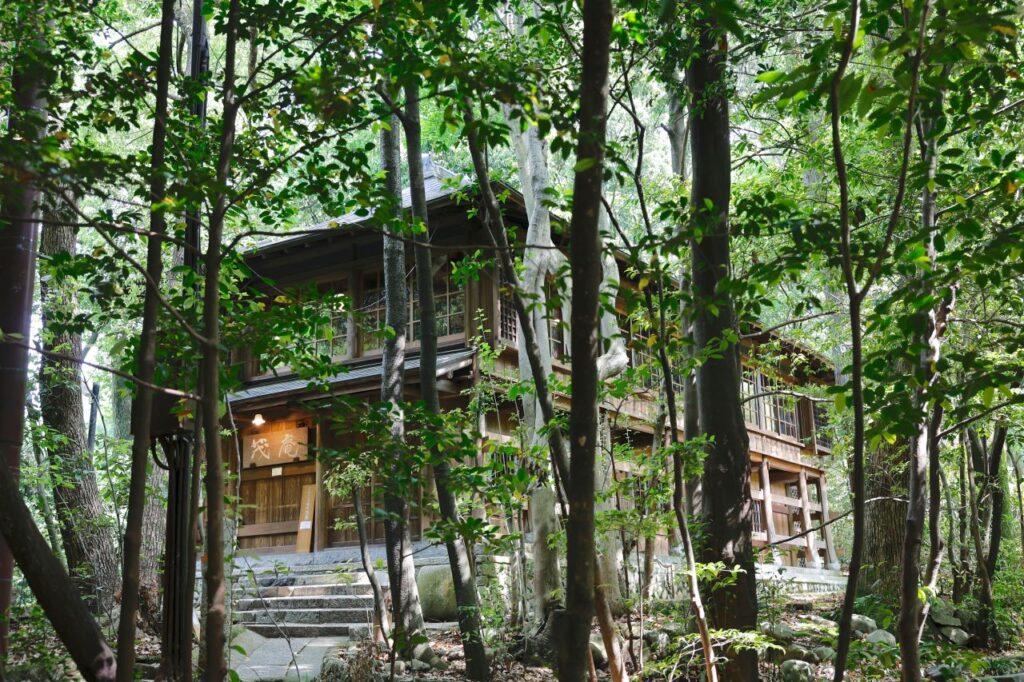

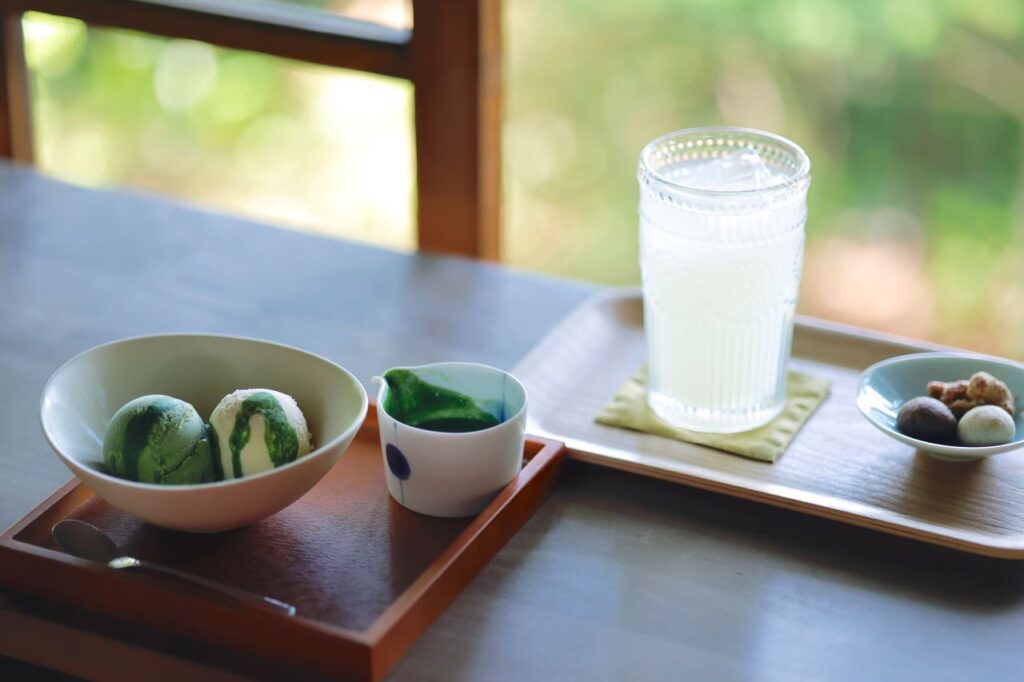

Business hours/12:00-17:00 (LO/16:30)
Closed on Mondays and Tuesdays (open if Monday or Tuesday is a national holiday)
Located in the Kubo Family Residence (formerly the Imao Keinen Residence), a registered tangible cultural property, Rokujuan offers a view of a magnificent Japanese garden that has been carefully maintained down to the smallest detail. Hana Warabi with edible flowers floating on it is as beautiful as an artwork, and the melt-in-your-mouth texture is very appealing. If you wish, you can ask for an explanation of the building. Enjoy a blissful moment of encountering a historical building and beautiful warabi mochi.
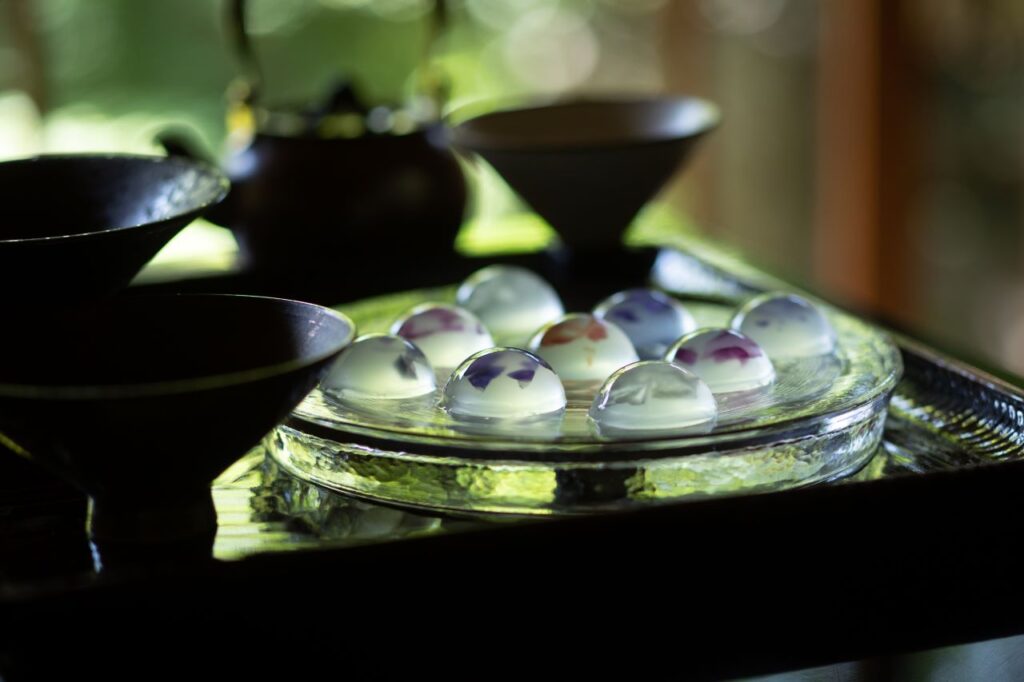

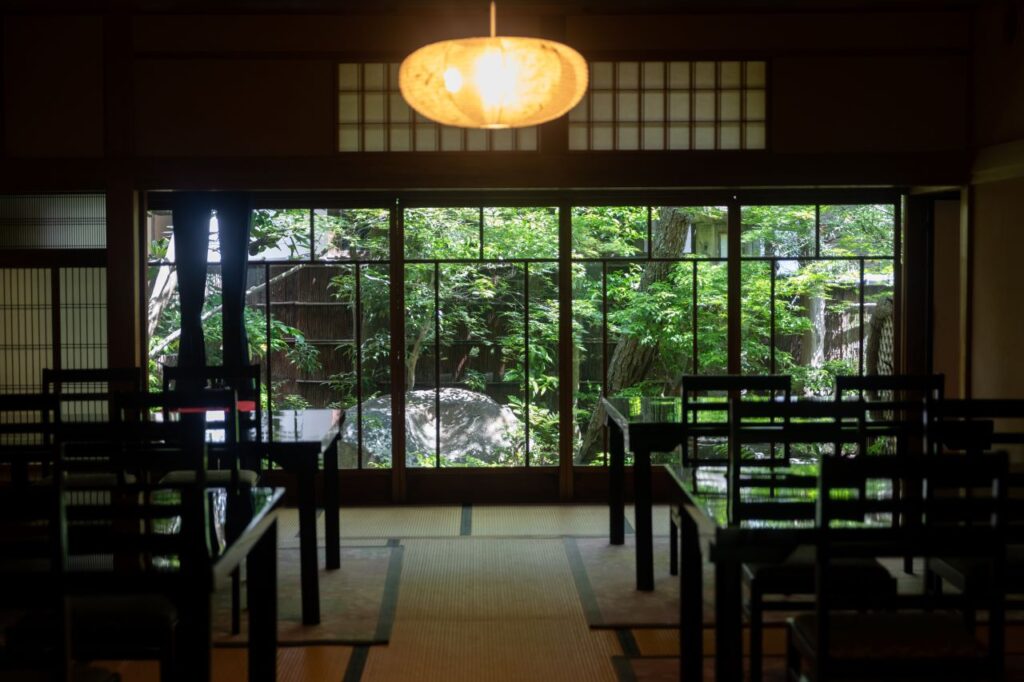

Business hours: 11:00 - 20:00 (LO/19:00), Saturday, Sunday and holidays 8:00 - 21:00 (LO/20:00)
Closed/unscheduled holidays
The customers go through the curtain of each restaurant, saying, "I'll meet you in an hour," and sweat it out. Such a scene from the Showa period can be found here. The nostalgic tile walls and wooden lockers are exactly as they were when the building was constructed more than 90 years ago. In the spacious changing room, an old-fashioned anma (Japanese sweet bean paste) machine stands, and you can experience a time-slip back to the Showa era. [Hinodeyu was used as a filming location for the movie "Mother Water. One of the best ways to forget about the dreary outside rain is to sink into the warm bathtub.
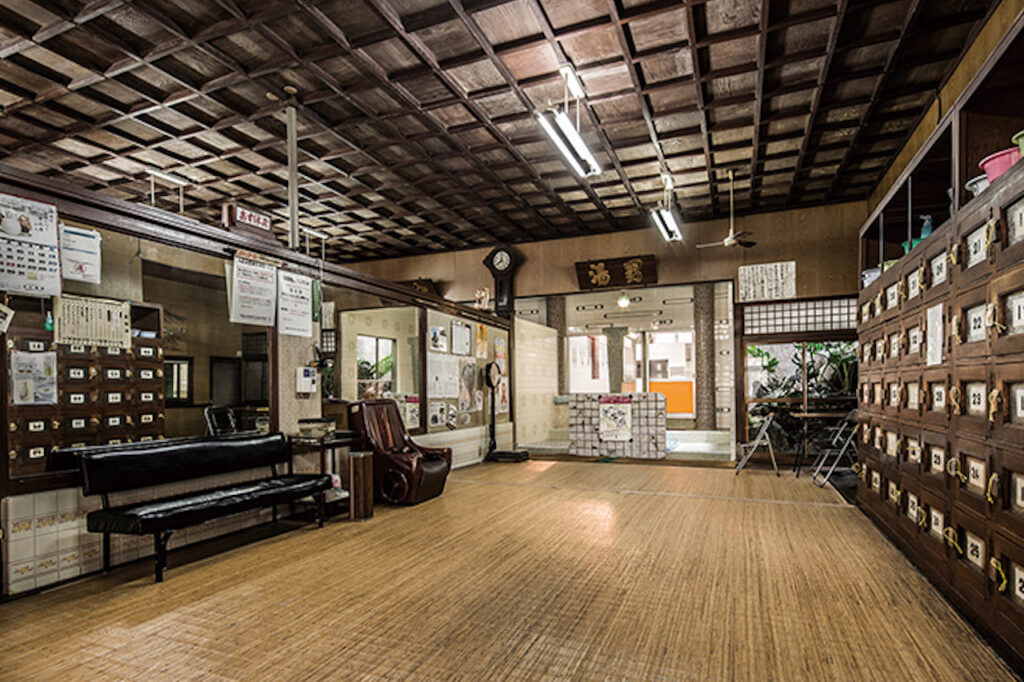



Hours of operation / 16:00-23:00
Closed/Thursday
Bathing fees: 490 yen for junior high school students and older, 150 yen for elementary school students and older, and 60 yen for infants and toddlers.
ANDO, a long-established manufacturer of kimono accessories, was founded in Kyoto in 1923 and celebrated its 100th anniversary last year. The Yanagiba Dori area where the store is located used to be home to many dyeing and shibori (tie-dyeing) stores. Visitors can choose from three different dyeing methods and 20 different colors of dyes to create their own original dyed items. The store is filled with colorful tie-dyed items dyed using traditional techniques. Spend a moment to refine your senses by experiencing the dyeing experience and the historical dyeing culture.
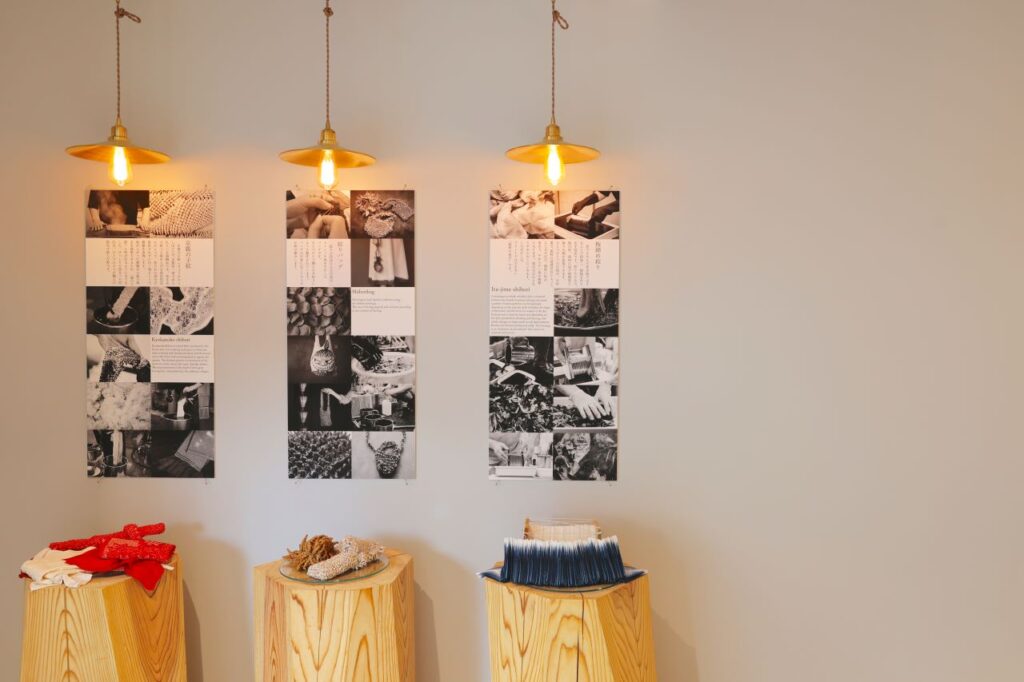

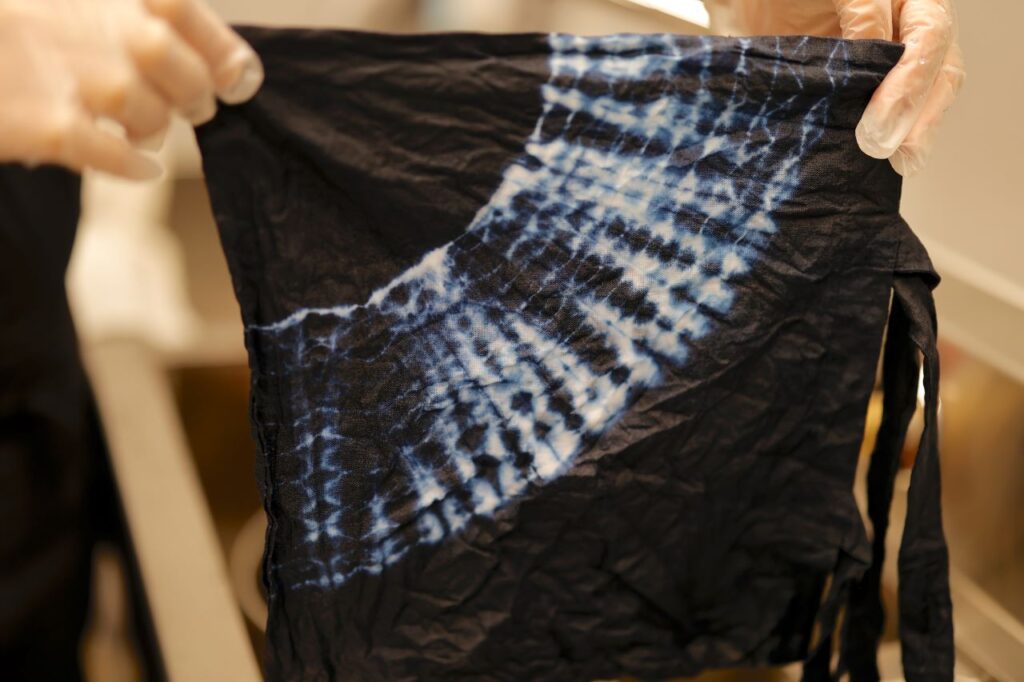

Business hours/9:30-17:00
Closed on Saturdays, Sundays and national holidays
Time required/90 min.
Trial fee / 5,500 yen
Schedule/Website CalendarConfirmation from
How to apply/Web siteonly
The first non-verbal (i.e., wordless) stage play "GEAR" from Kyoto in Japan, which has been running for 13 years with more than 4,300 performances and 300,000 audience members, will hold an event titled "Rainy Day Excitement Campaign 2024" for the June and July performances. If certain conditions in the weather forecast are met, the day will be designated as a campaign day, and the audience will receive original tenugui hand towels, photo time with the performers, and many other exciting perks. During the rainy season, when going out tends to be a chore, be sure to come to the theater for a quality experience that you can enjoy without getting wet in the rain.
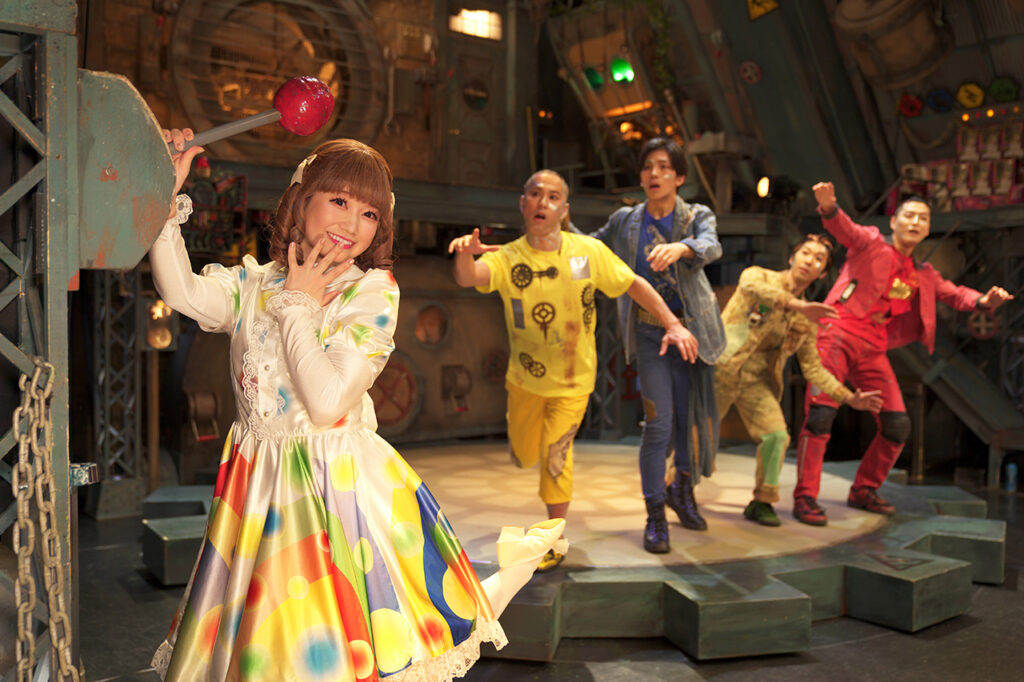

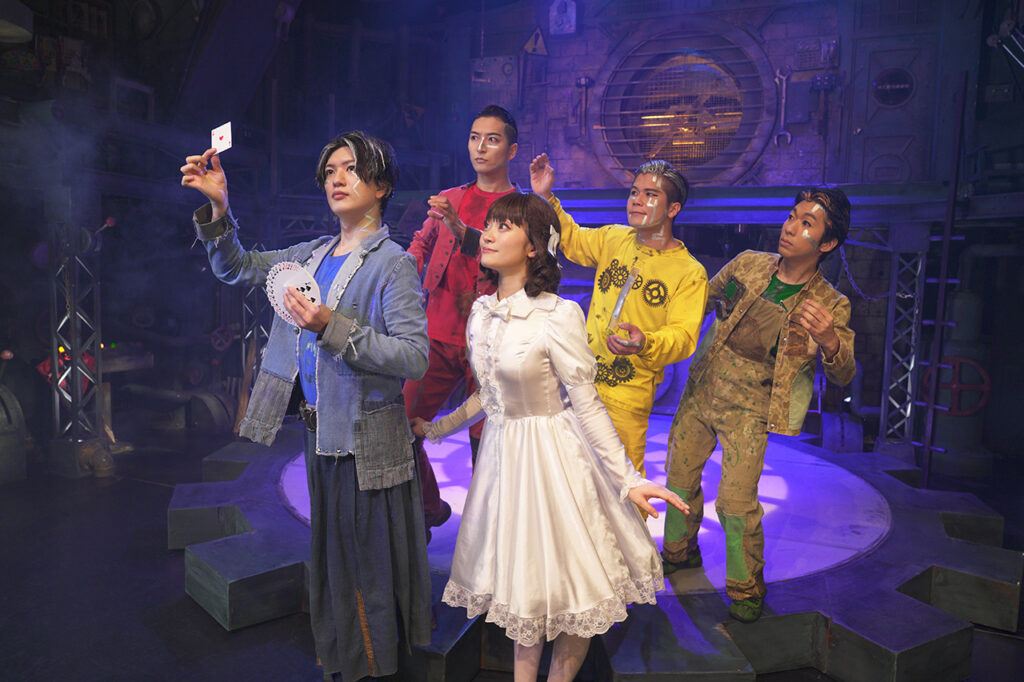

Date/Time/Official siteConfirmation of
Price: General S seats 7200 yen, Elementary to high school students S seats 5200 yen, Preschool children (4-6 years old) 1200 yen
Enko-ji Temple was originally built by Tokugawa Ieyasu in 1601 as Enko-ji School for teaching and learning. It has a history as Japan's only dojo specializing in nuns, and every Sunday early morning, visitors can experience zazen meditation in the zendo, which still exists as it was in those days. The picturesque Jugyu-no-niwa garden that can be viewed from the main hall is breathtakingly beautiful. On rainy days, raindrops drip on the moss and green maples, creating a beautiful Jugyu-no-niwa that can only be seen in the rain. After praying in the main hall, take a stroll in the garden under an umbrella and you may see a cute Jizo (guardian deity of children). Enjoy a luxurious time in the midst of history and nature.
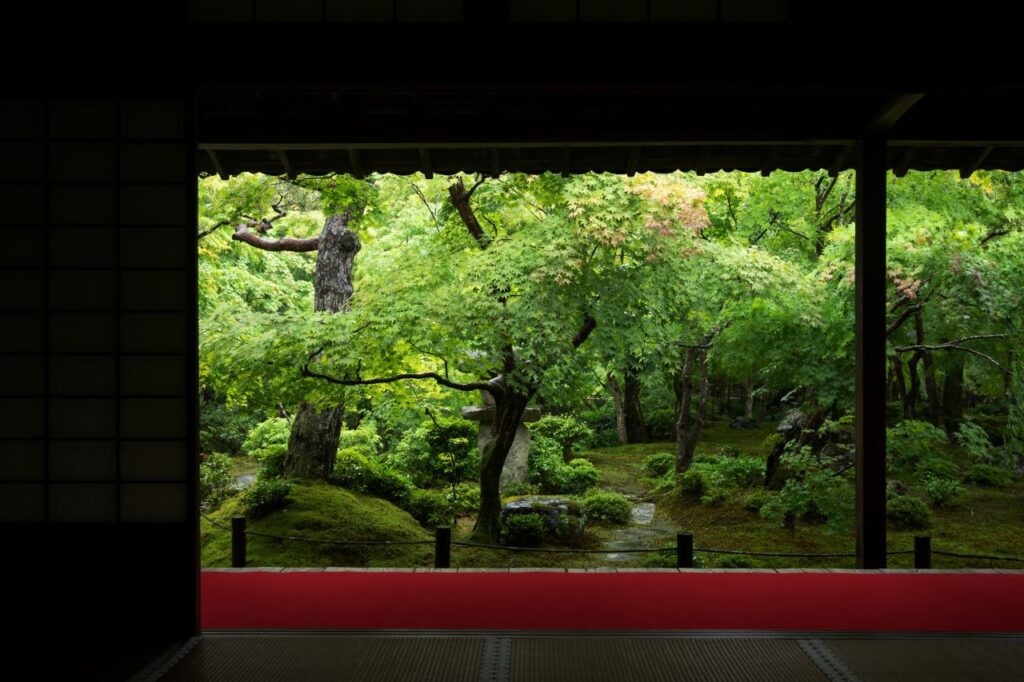

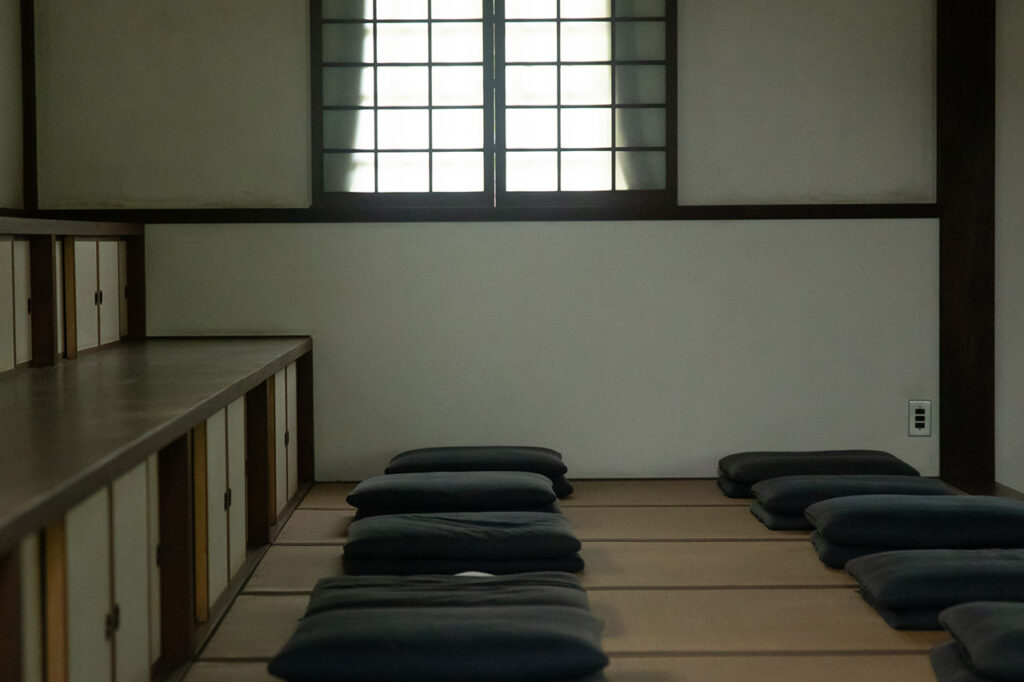

Visiting hours/9:00-17:00
Admission fee: 600 yen for adults, 300 yen for elementary and junior high school students
Reservations for the Zen meditation experience must be made by 5:00 p.m. the day before.
Zuikogama Kyoto Kiyomizu Branch was established in 1771, and offers a hands-on pottery wheel making experience at its pottery in Kiyomizu, Kyoto. The pieces you carefully create with your own hands are an unpredictable experience in which the shape of the piece can be determined by the slightest chance! You can make your one and only Kyo-yaki or Kiyomizu-yaki while being guided by a skilled craftsman. The light plan is available from 2,900 yen for a casual challenge. Experience first hand the traditional techniques of pottery making that have been handed down for over 250 years.
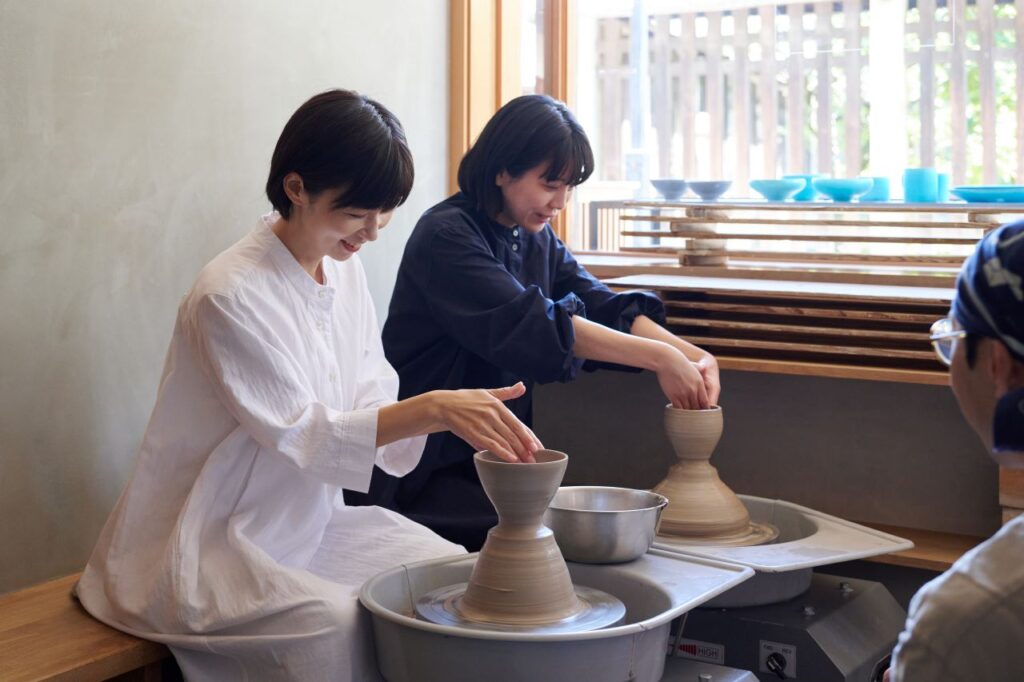

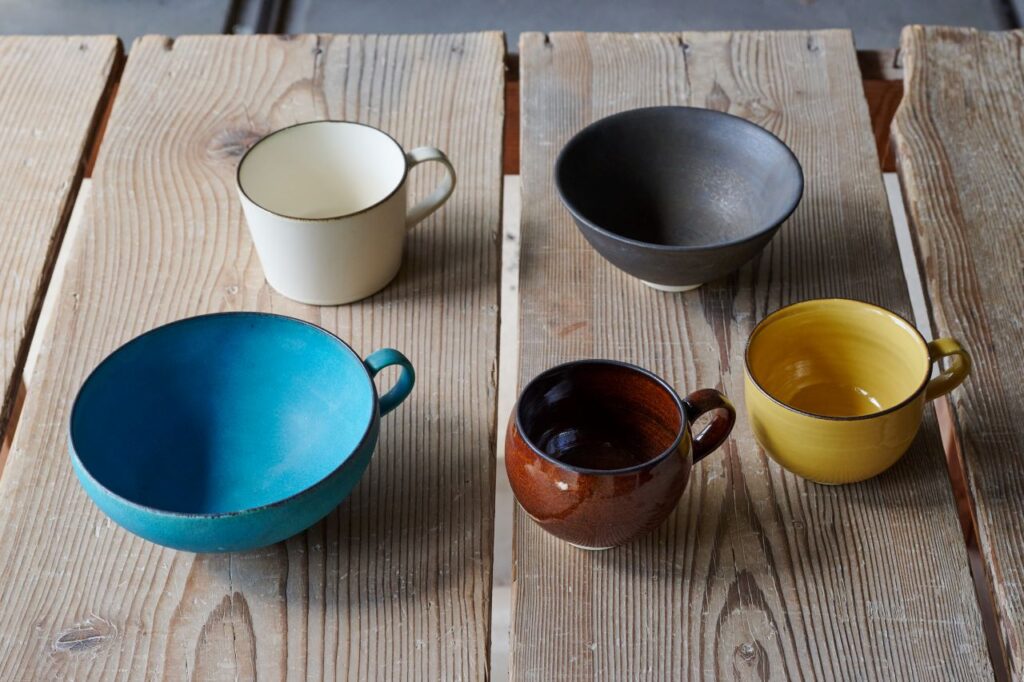

Business hours/10:00-17:00 (last admission/16:30)
Closed/Open all year round
Time required: 20 min.
Experience fee/2,900 yen and up
The Minamiza Theater, located near Keihan's Gion-Shijo Station, is an indoor theater that can be enjoyed even on rainy days. The Minami-za was founded in Shijo, a prosperous theater district in the early Edo period (1603-1868), and is still loved by theater fans as Japan's oldest theater with a long history. In the building, which is registered as a Tangible Cultural Property, you can enjoy performances of the time, including traditional classical performing arts and new entertainment. In addition to the spectacular performances, visitors should also pay attention to the stately interior, with its chandeliers and lattice ceiling that have been handed down since the early Showa period.
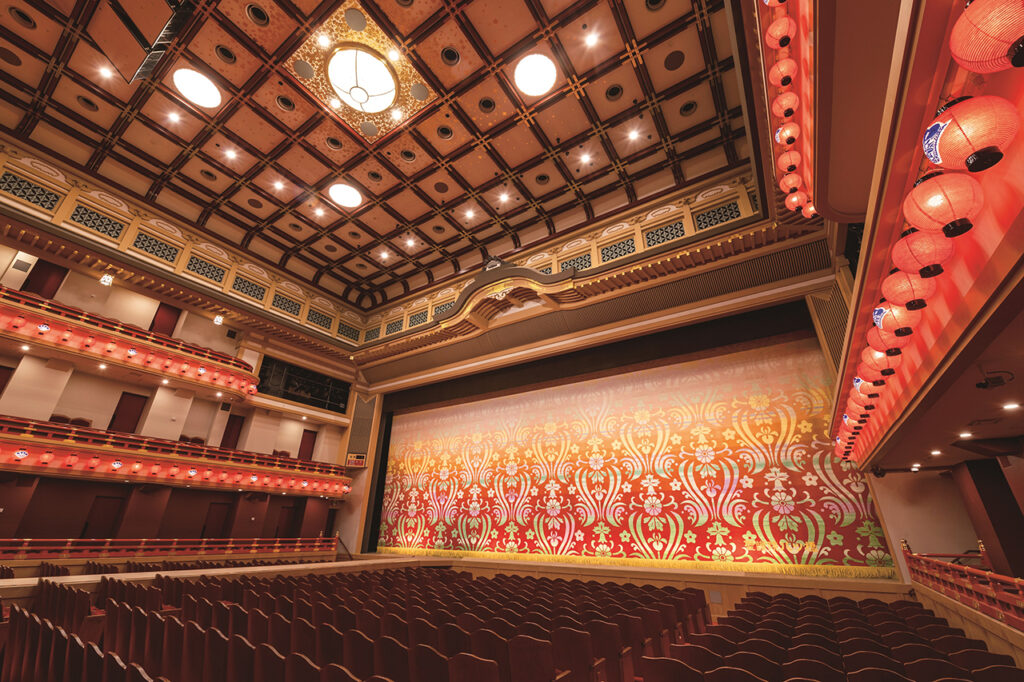

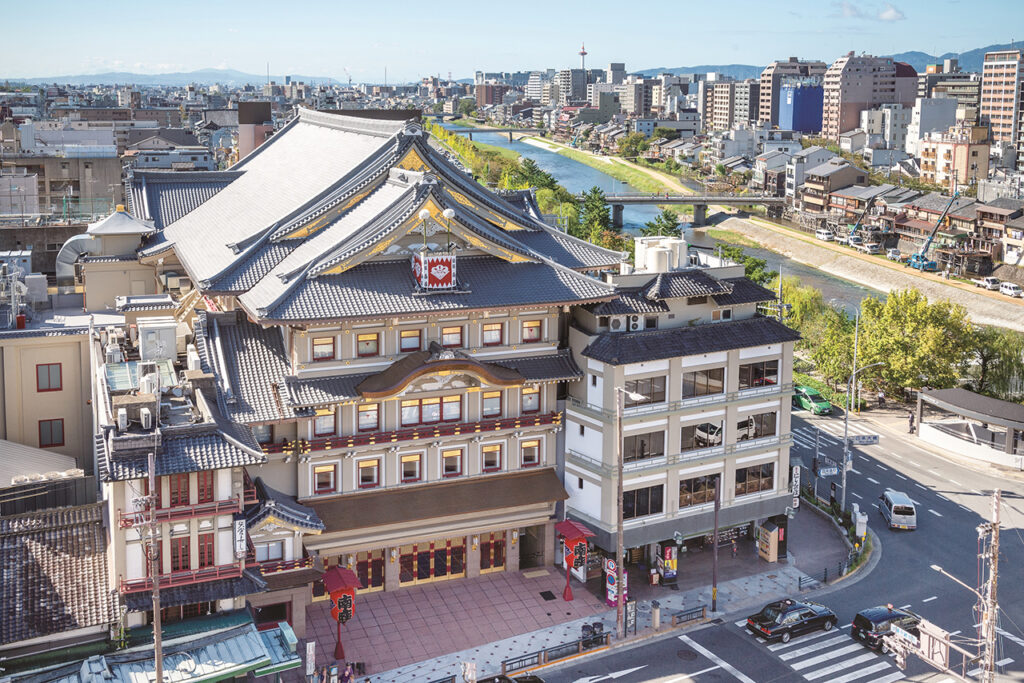

Performance Schedule
Schedule/Web siteConfirmation required from
How to apply: Web site, telephone (0570-000-489), at the theater counter
Over 600 interviews per year! An order site carefully selected by the editors who knows Kyoto and Shiga.
nowOfficial LINE friend registration500 yen OFF coupon is being issued!
Distributed every Friday morning at 8:00 am! From new restaurant information to event information that we want to share with you, We deliver articles about Kyoto that are useful to know. About 20,000 people have registered.Click here to add a friend!
 News
News Feature article
Feature article Featured event
Featured event